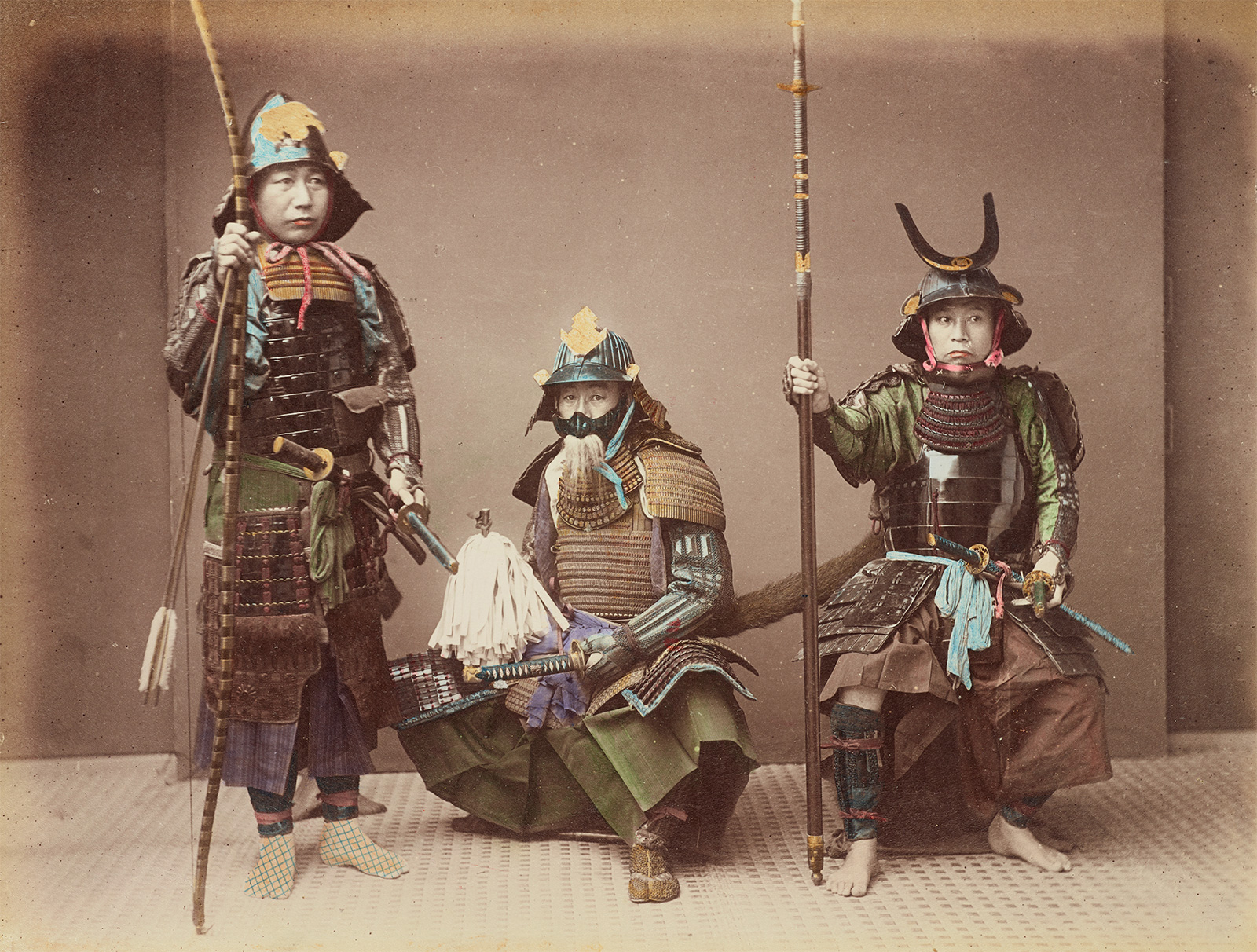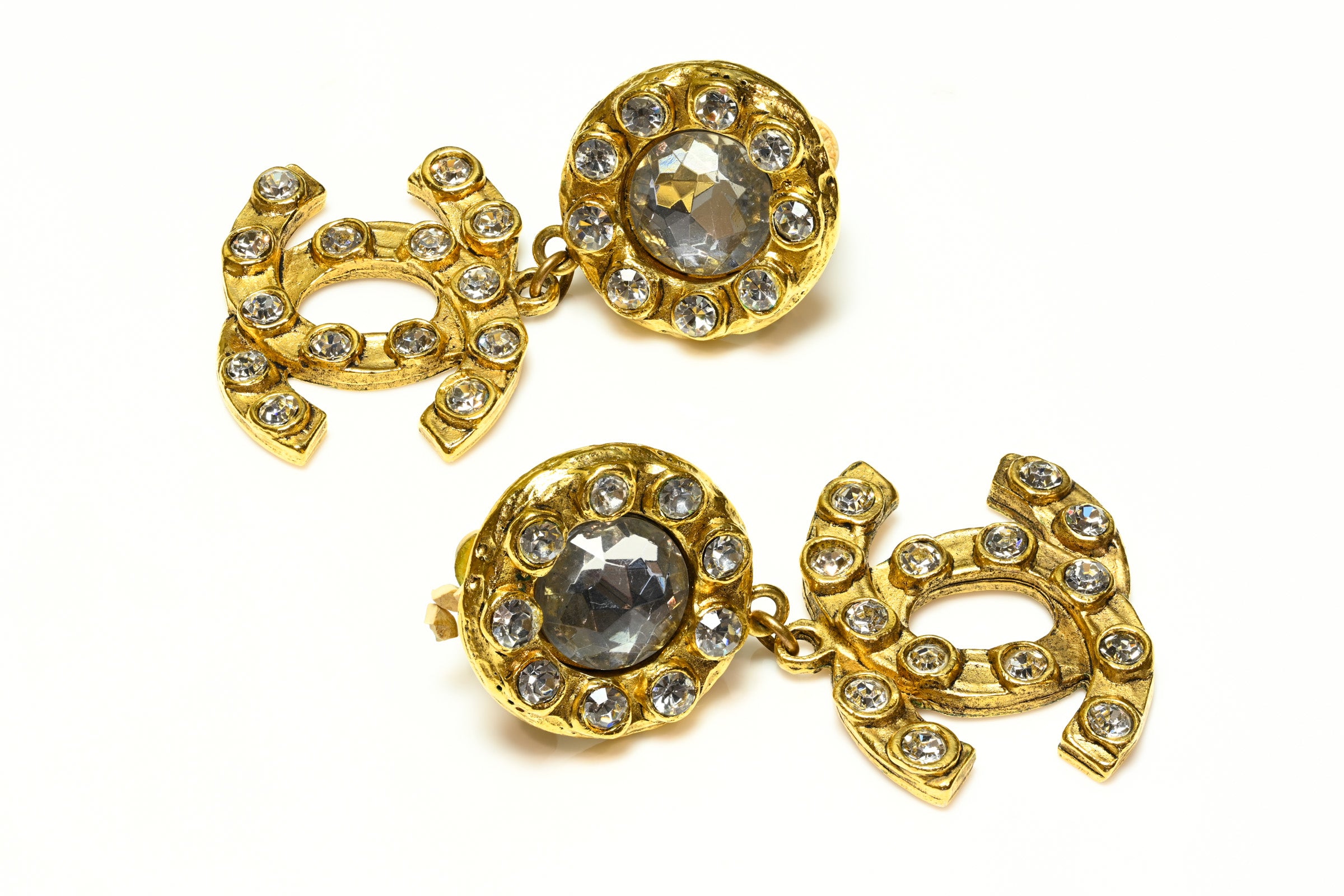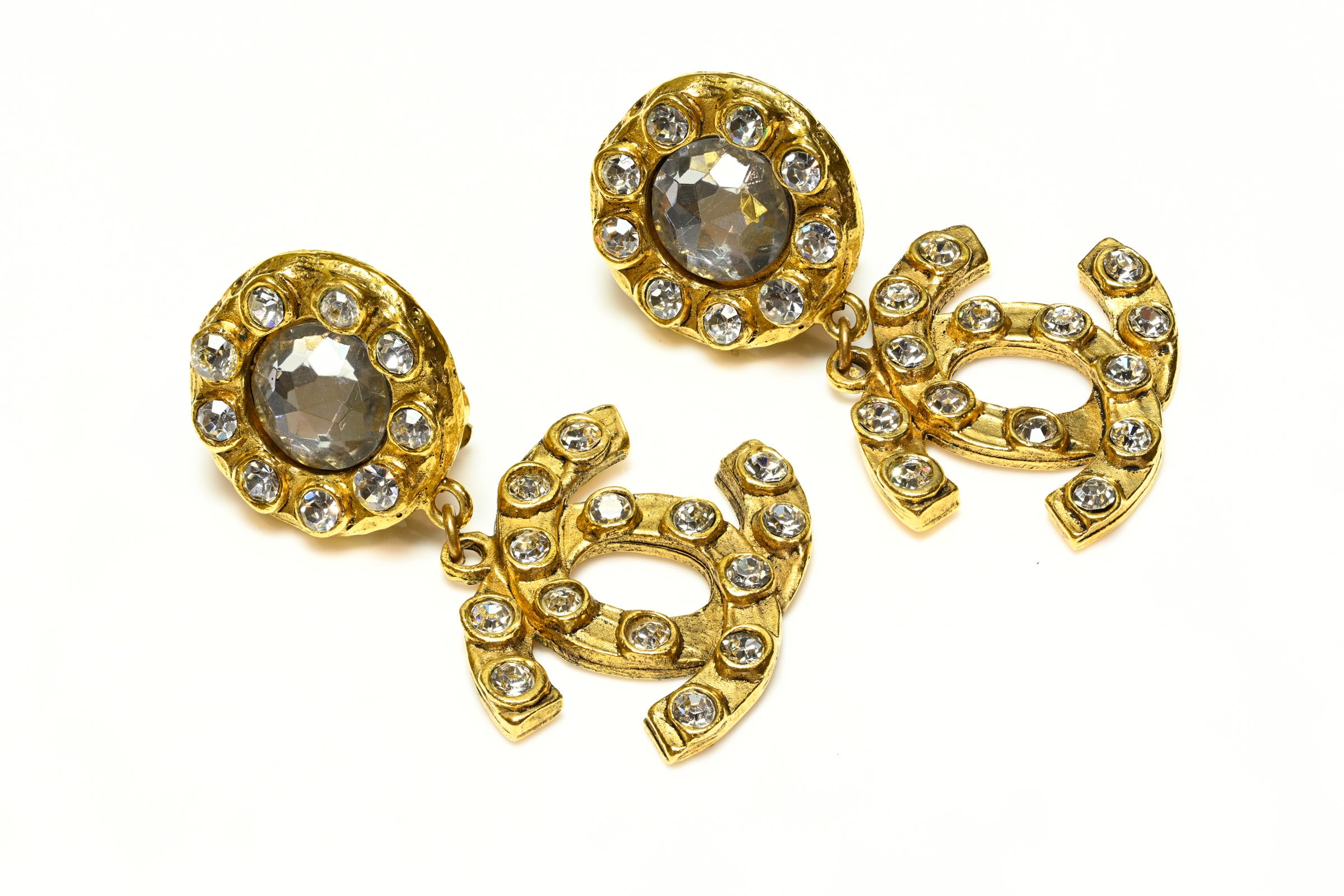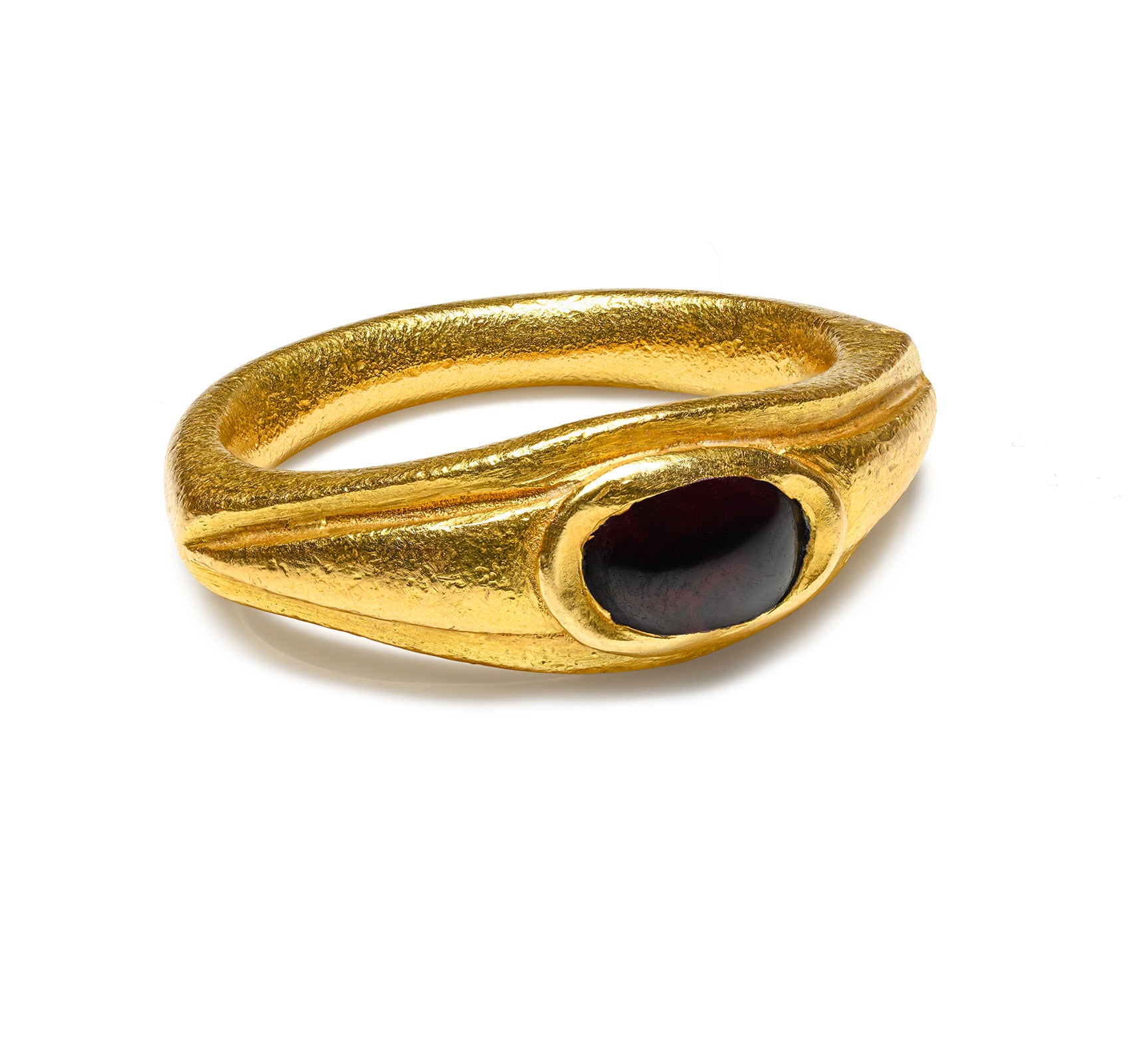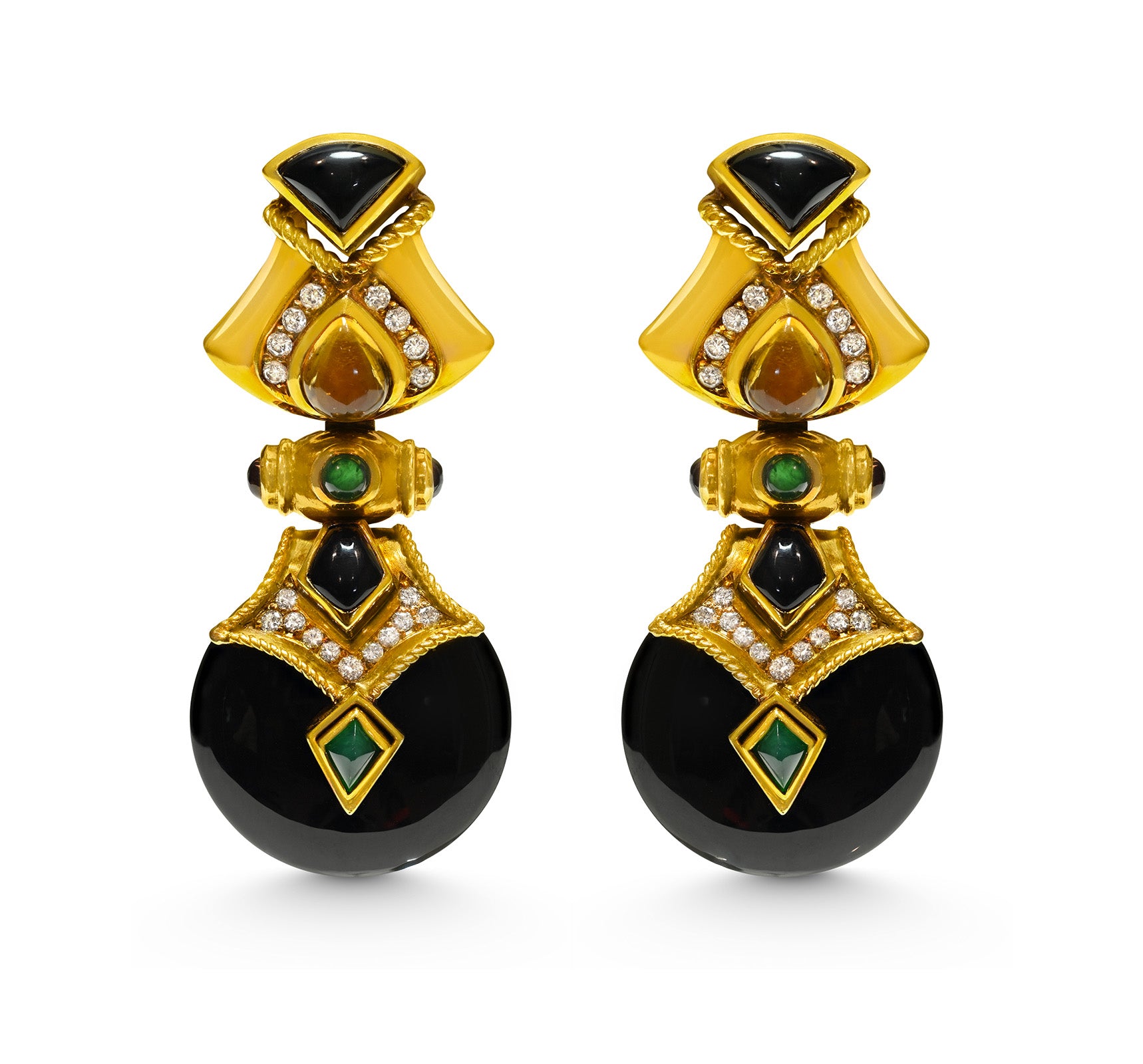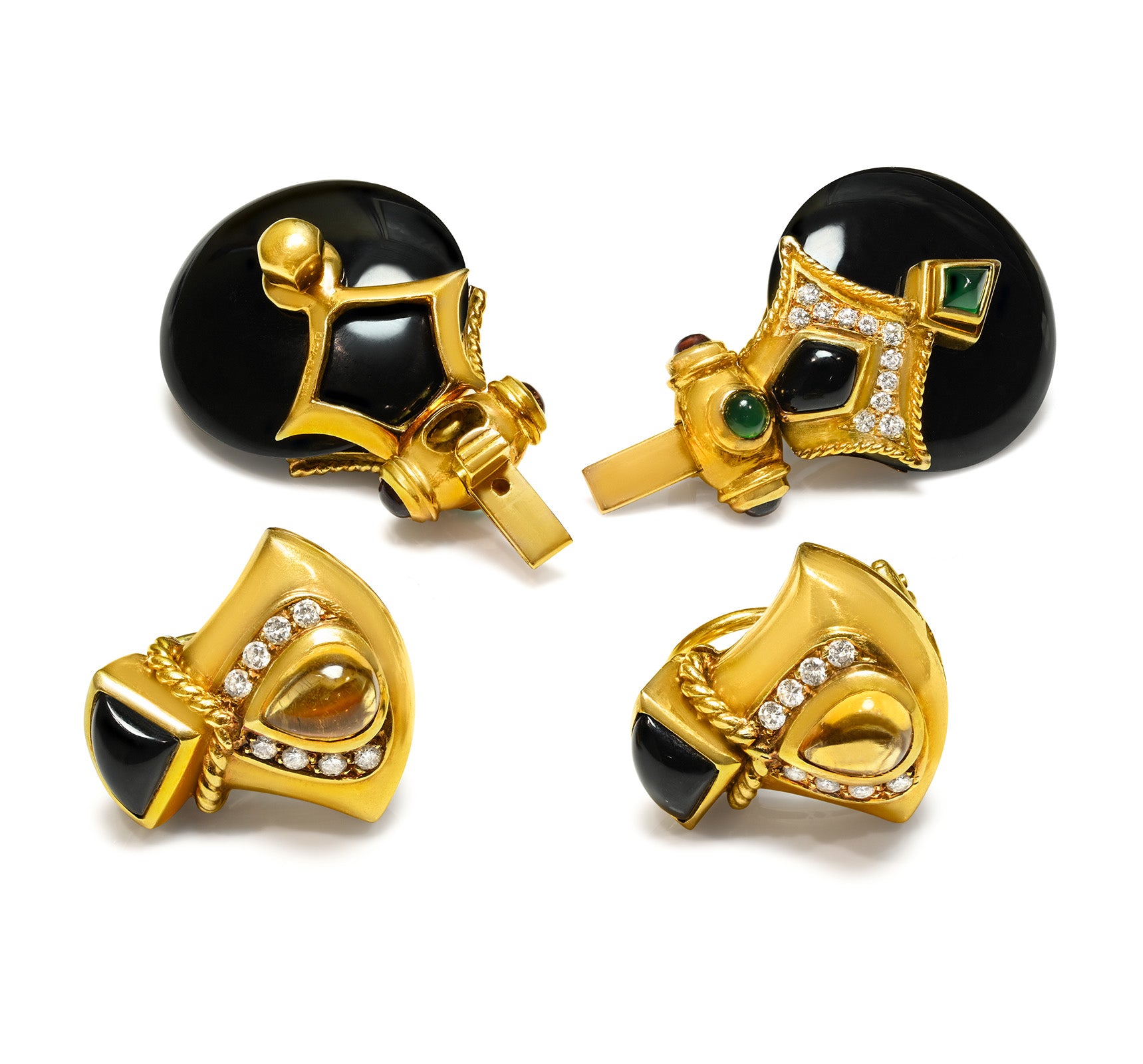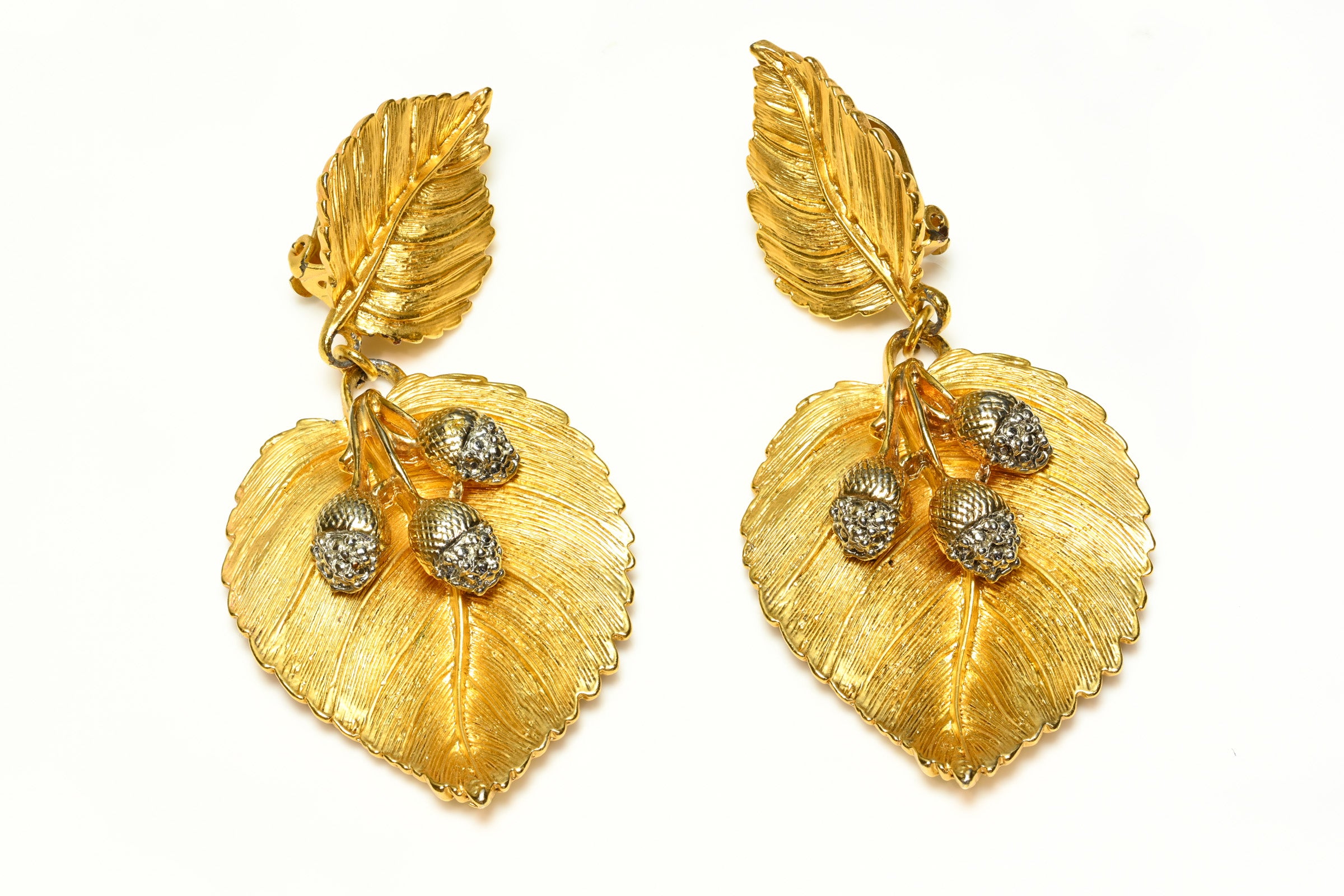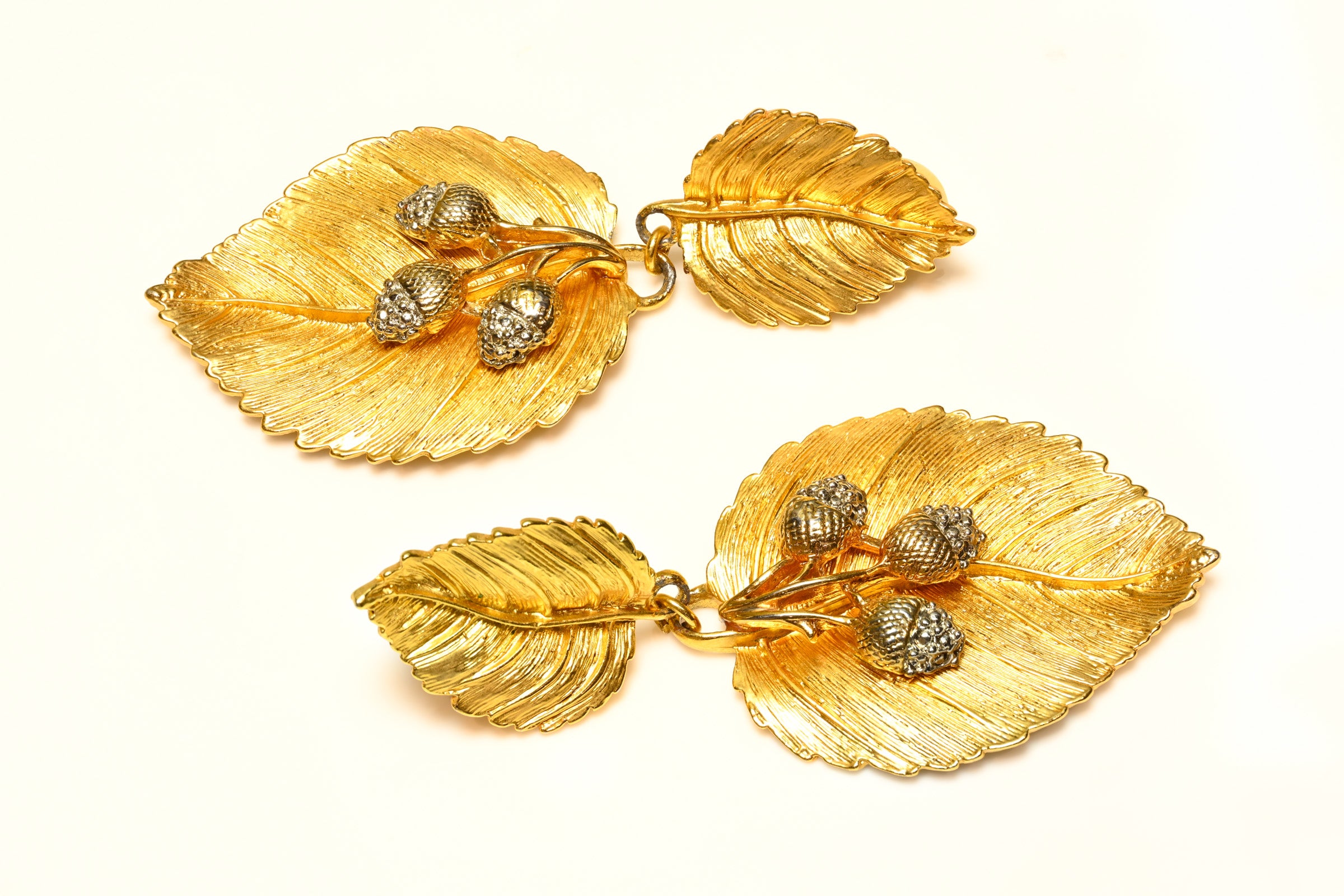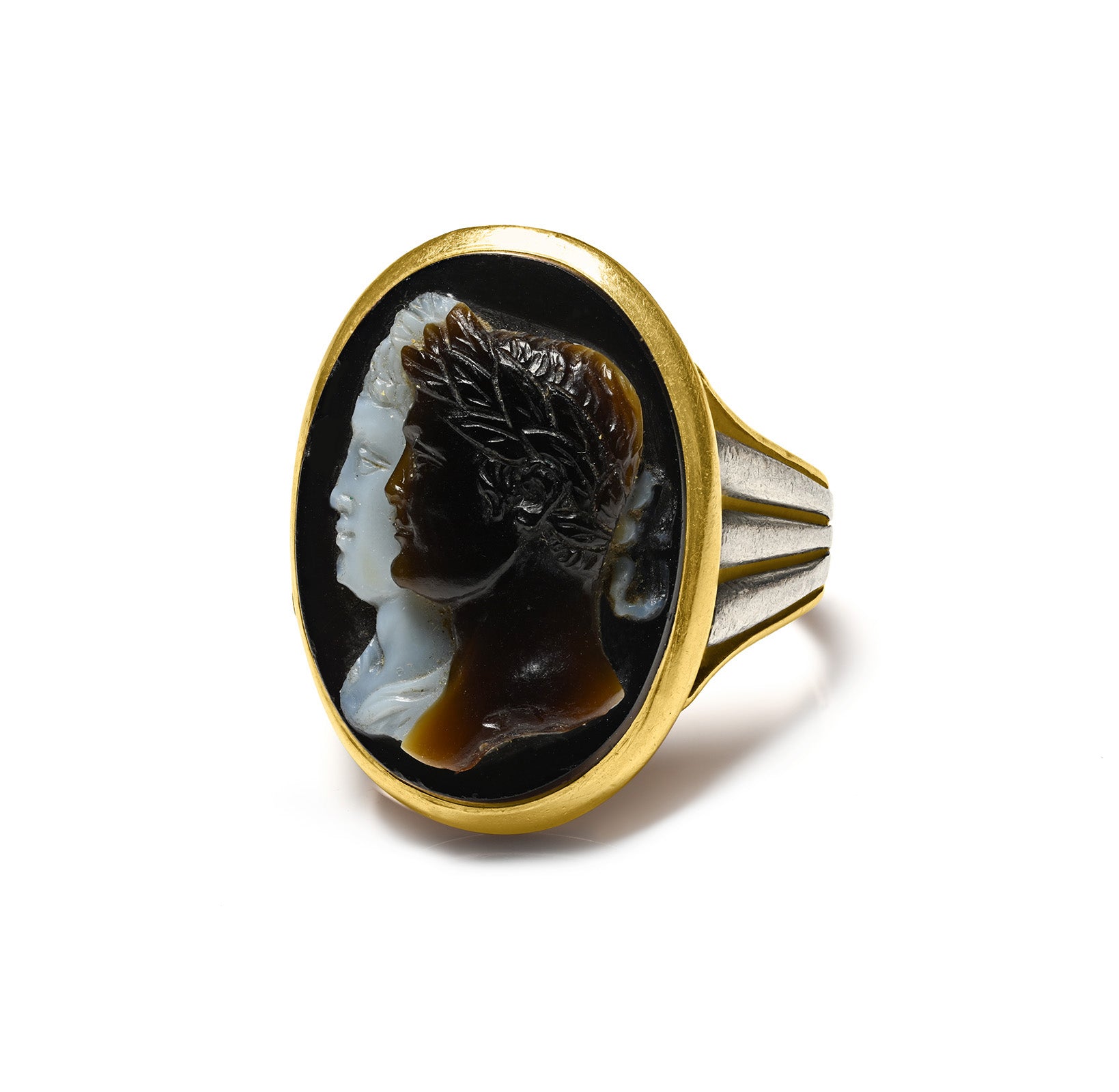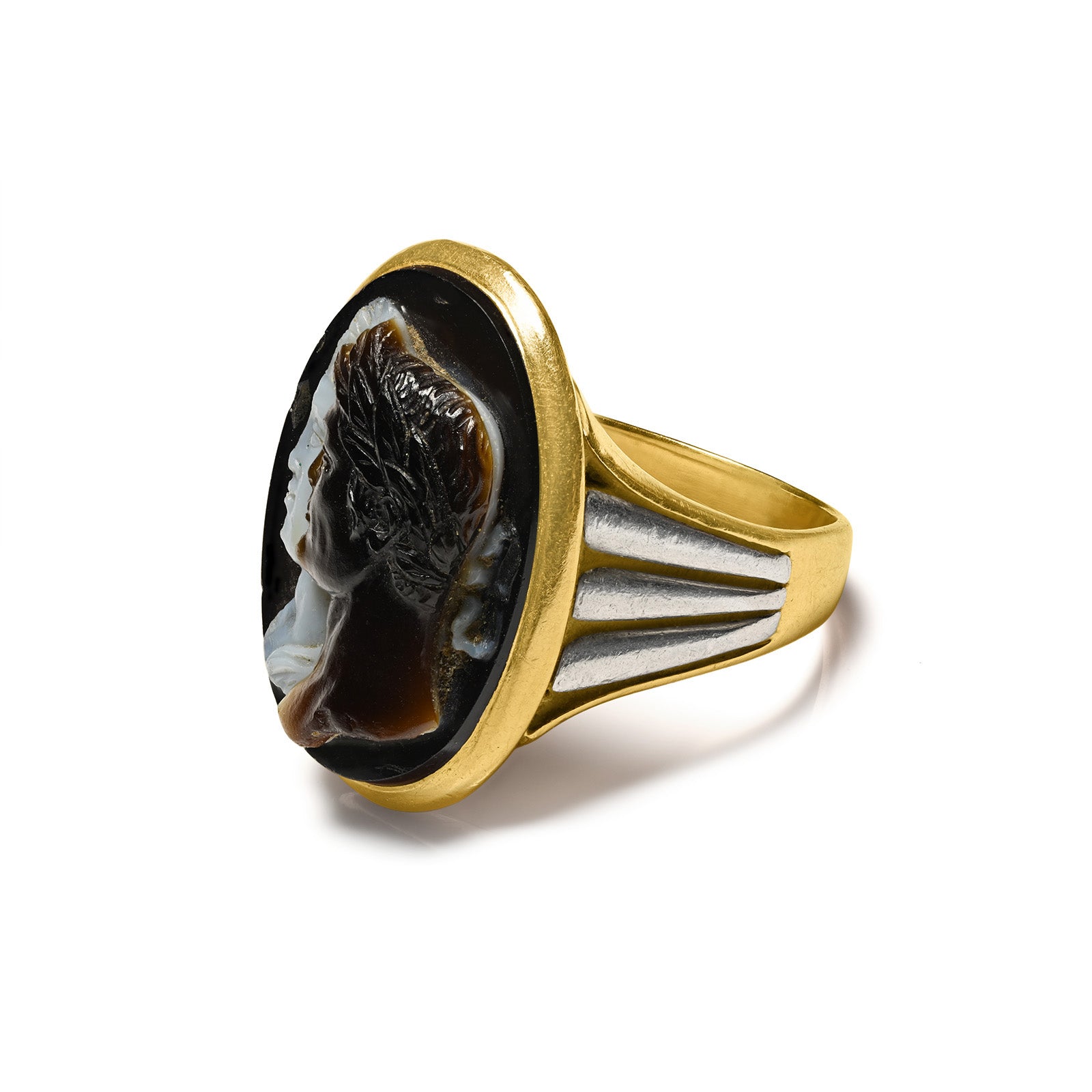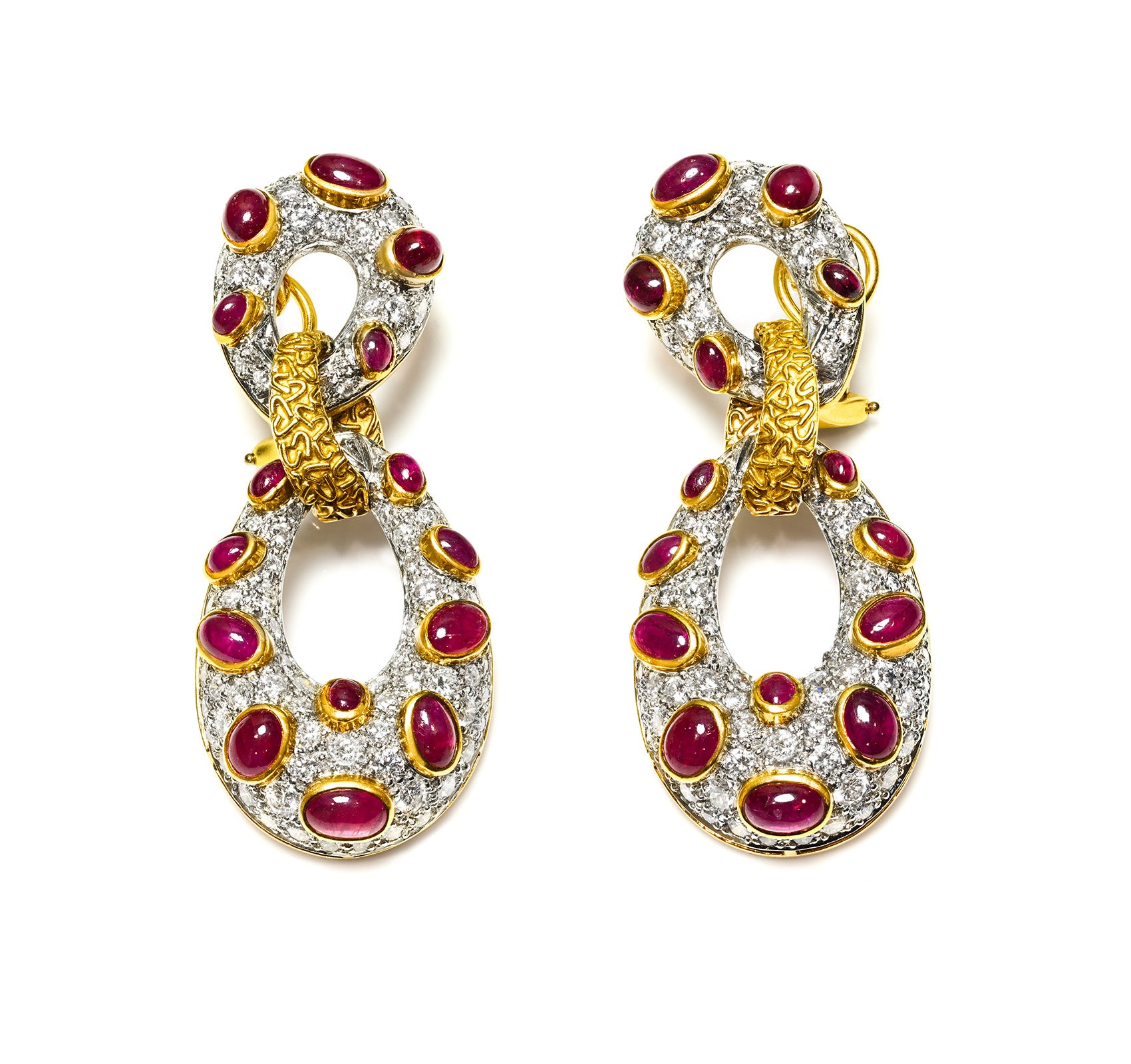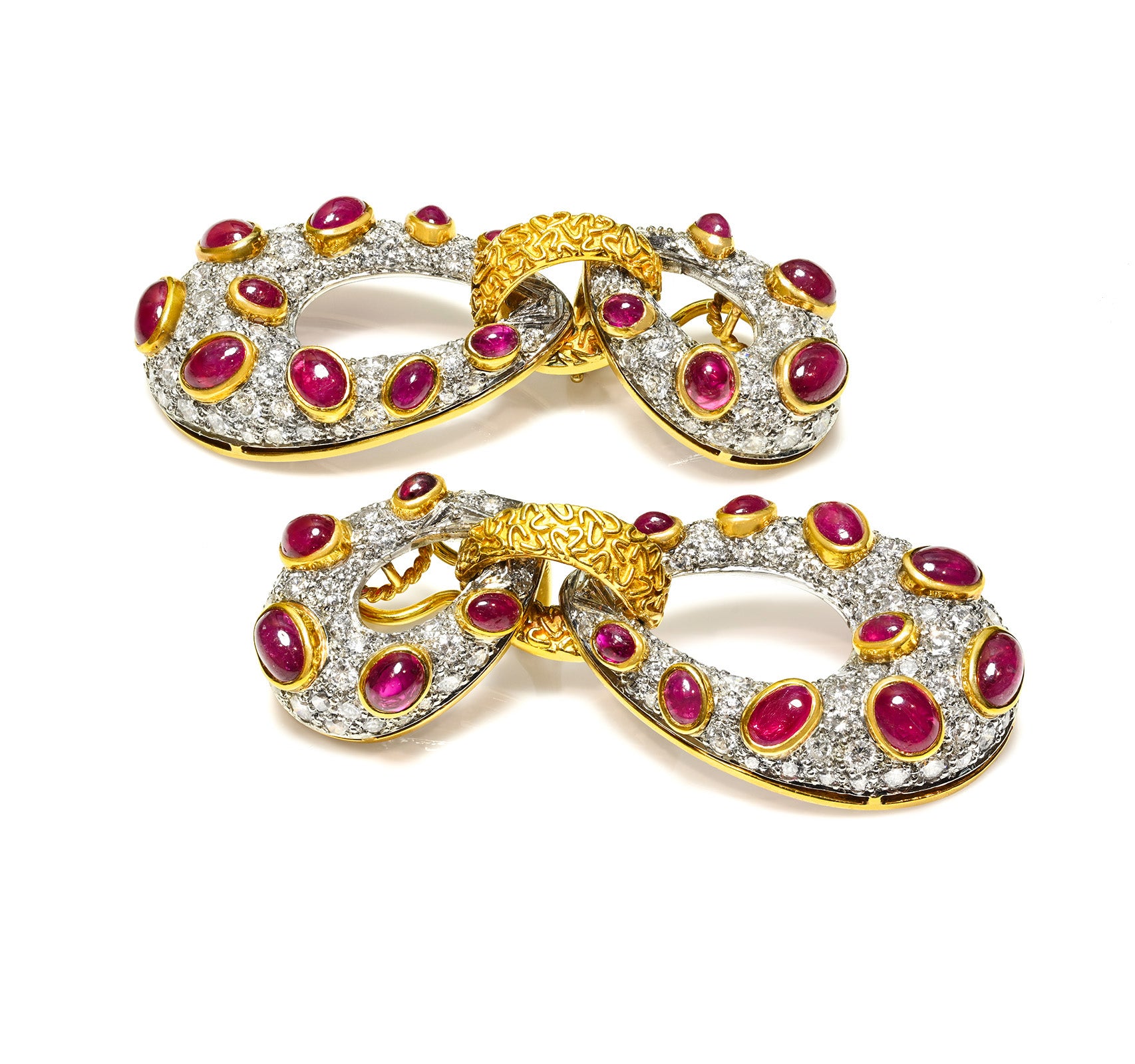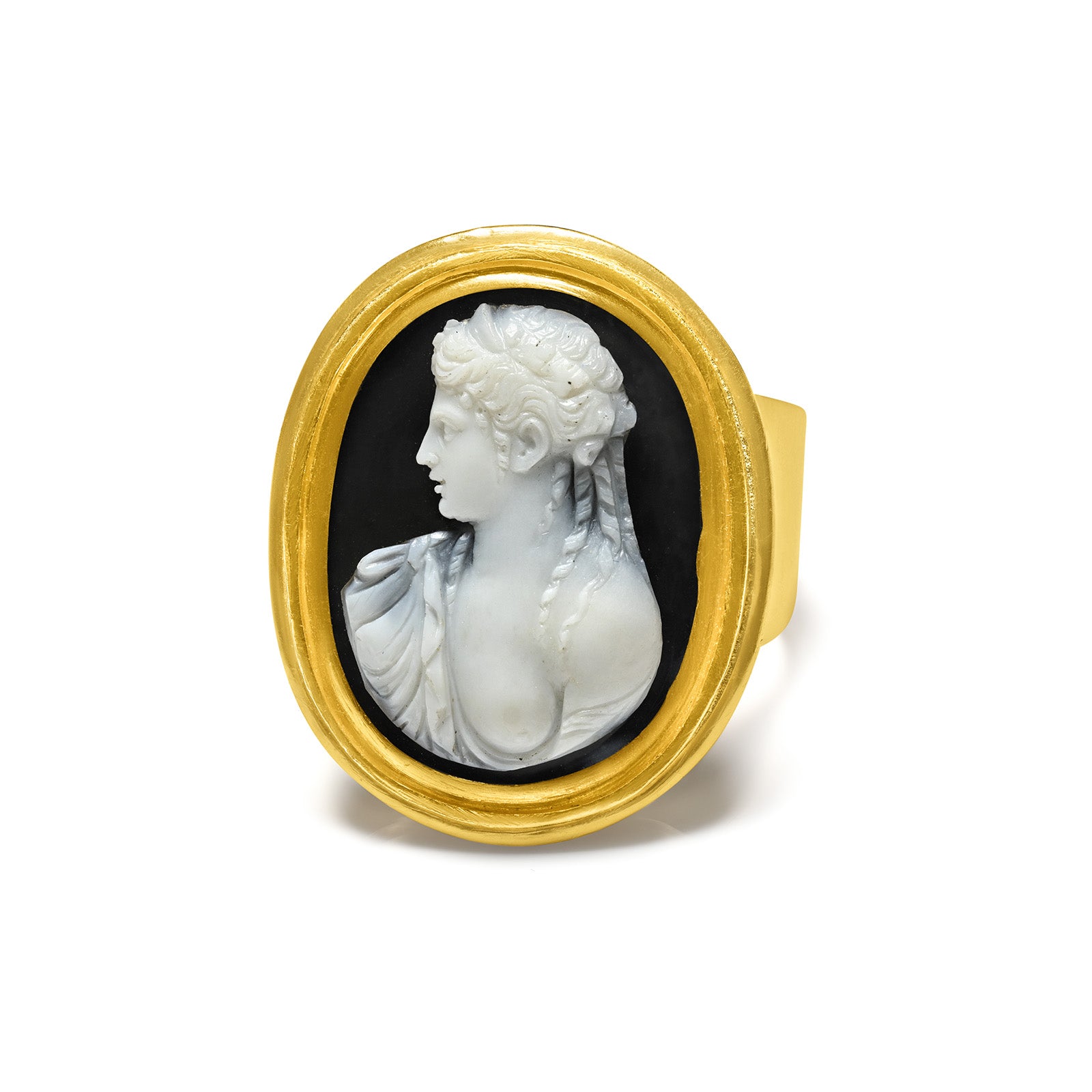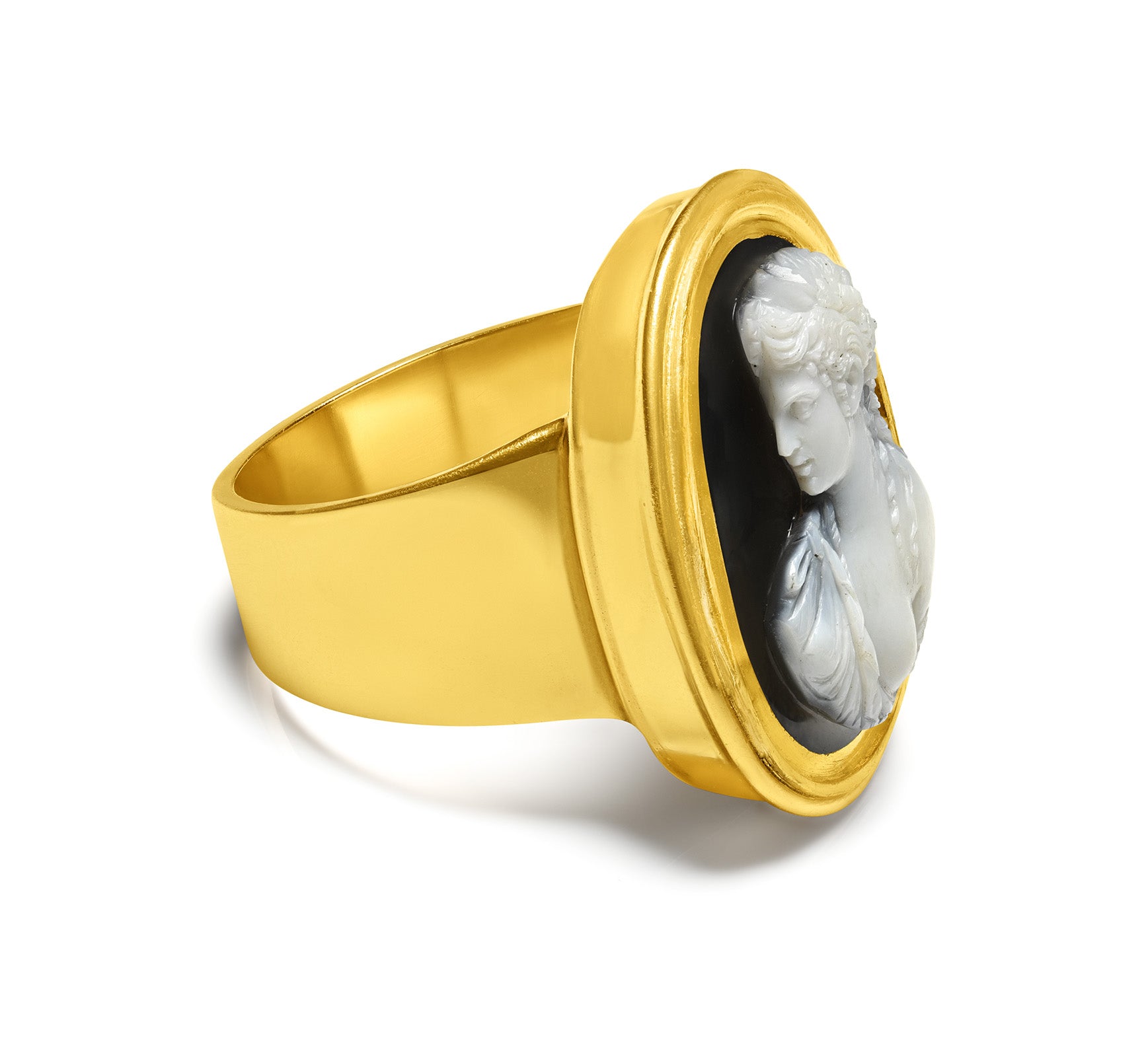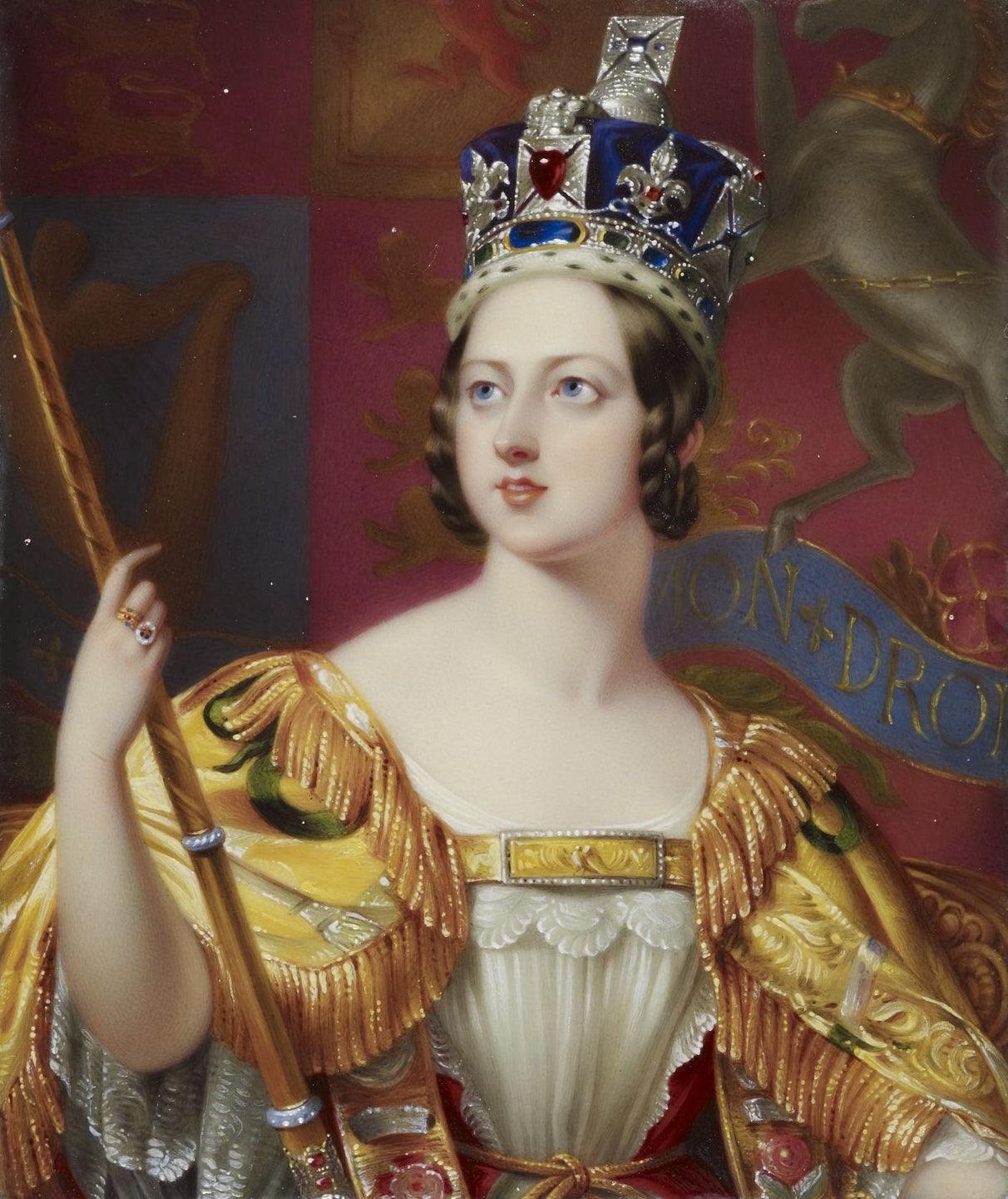
Enigmatic Jewels and Their Strange Histories: Facts vs Myths
Across civilizations, jewels have never been mere ornaments. They have been omens, weapons of destiny, vessels of faith, and symbols of divine favor.
Some were carried into battle; others were sealed in temples, guarded by priests, or hidden in royal chambers where only whispers could travel. And around a select few — the rarest, the most coveted, the most impossible — an aura of mystery grew so thick that history and legend became indistinguishable.
These are the jewels that ancient chroniclers feared, that kings coveted, and that storytellers embellished for centuries.
Stones said to bless or to curse. Gems that vanished with empires. Relics surrounded by miracles, prophecies, and supernatural claims — many disproven, some exaggerated, others still unexplained.
Yet behind every myth lies a traceable truth: a historical event, a political intrigue, a scientific fact, a human life altered forever by a single shimmering object.
In this article, we explore 30 of the world’s most enigmatic jewels — treasures whose stories oscillate between myth and documented history, between superstition and scholarship.
From the legendary ring of King Solomon to the haunted amethyst carried by Victorian occultists, from diamonds that shaped empires to pearls that ignited scandals, these jewels reveal not only the fantasies of the past but also the very real forces that shaped our world.
Before we examine each piece, here is a map of the mysteries ahead — a guide to some of the most fascinating artifacts ever recorded.
Below, you’ll find 30 of the world’s most enigmatic jewels, explored one by one.
LEGENDARY / ANCIENT MYTHOLOGICAL JEWELS
-
King Solomon’s Ring
-
The Syamantaka Jewel
-
Cleopatra’s Emerald
-
The Lost Jewels of the Queen of Sheba
ANTIQUITY – RELICS WITH MIRACLES, CURSES, OR SUPERNATURAL CLAIMS
-
Yasakani no Magatama (Japan’s Imperial Regalia jewel)
-
Tutankhamun’s Meteorite Pectoral
-
The Eye of Horus Amulet of Psusennes I
-
The Crescent Crown Jewels of the Sassanian Kings
MEDIEVAL & RENAISSANCE TREASURES SURROUNDED BY LEGENDS
-
The Black Prince’s Ruby
-
The Three Brothers Jewel
-
The Florentine Diamond
-
The Sancy Diamond
COLONIAL ERA — CURSED DIAMONDS & JEWELS OF EMPIRES
-
The Hope Diamond
-
The Koh-i-Noor Diamond
-
The Black Orlov Diamond (Eye of Brahma)
-
The Regent Diamond
-
The Darya-i-Noor
-
The Nasak Diamond
-
The Noor-ul-Ain
JEWELS WITH MODERN MYSTERIES, DISAPPEARANCES & STRANGE EVENTS
-
The Delhi Purple Sapphire
-
La Peregrina Pearl
-
The Peacock Throne Jewels
-
The Spanish Inquisition Necklace
-
The Tears of Shiva Pearls
-
The Hope Spinel
-
The Irish Crown Jewels
-
The Nizam’s Jeweled Dagger
-
The Russian Nuptial Jewels
-
The Patiala Necklace
-
The Amber Room Pendant
30 of the World’s Most Enigmatic Jewels
1. King Solomon’s Ring — Legend, Power, and the Search for a Real Artifact
Few legendary jewels have inspired as many stories, scriptures, and folktales as the Ring of King Solomon. Revered in Jewish, Christian, and Islamic traditions, it is said to be the seal through which Solomon commanded spirits, deciphered the language of animals, and governed the natural world with divine wisdom.
But did such a jewel truly exist — or is it a myth woven from centuries of reverence?
The Mythic Narrative
In the Talmud, the ring appears as a signet bearing the ineffable name of God, granting Solomon the authority to rule demons and angels alike.
Medieval texts amplify this with tales of Solomon using the ring to speak to birds, subdue storms, and judge between good and evil with perfect clarity.
Across all traditions, one idea remains constant:
Solomon’s ring is never merely jewelry — it is a channel of divine order.
Factual Considerations
Despite its fame, no physical artifact has ever been reliably identified as “Solomon’s Ring.” Scholars generally agree that:
-
The ring is symbolic, representing the king’s divinely sanctioned wisdom
-
Stories about its power grew during late antiquity and the early Middle Ages
-
The “seal” became important in Jewish mysticism (Kabbalah) and Islamic lore (Solomonic magic)
Some real signet rings from the region and period survive in museum collections, but none can be linked to Solomon with any historical credibility.
Even as a myth, the ring influenced centuries of amulets, seals, talismans, and protective jewelry across the Middle East and Europe. The six-pointed star (Seal of Solomon) became one of the most recognizable symbols in human history.
Solomon’s ring may never be found — but its legacy is unmistakably real.

2. The Syamantaka Jewel — A Hindu Legend of Wealth, Devotion, and Scandal
Among the most intriguing jewels in ancient Indian mythology is the Syamantaka, a gemstone of extraordinary brilliance described in the Bhagavata Purana and other classical Sanskrit texts. Said to bring wealth, fertility, and protection to its rightful bearer, it also carries a shadow: misfortune and death to the dishonest or impure.
The Mythic Narrative
According to the Purana:
-
The jewel belonged to the sun god Surya
-
It produced eight bhāras of gold a day (roughly 8–10 kilograms)
-
It came into the possession of King Satrajit
-
When he refused to surrender it, tragedy followed
-
The jewel caused jealousy, false accusations, and even murder
-
The god Krishna ultimately restored it to the rightful owner, proving his innocence
The Syamantaka is one of the rare gems in world mythology associated with both prosperity and calamity, depending on the moral character of its holder.
Factual Considerations
Historians agree:
-
The jewel is mythological, not an archaeological artifact
-
The story reflects early Indian beliefs about divine justice and moral duty
-
Its description resembles no known gemstone, though some compare it to a giant ruby or yellow sapphire
-
The myth likely reinforced social norms about honesty, stewardship, and rightful ownership in ancient India
Its dual nature — blessing the pure, cursing the impure — influenced centuries of Indian folklore and temple traditions. Even today, some South Asian jewelers reference the Syamantaka when describing stones believed to bring prosperity or fortune.
It is a reminder that in many cultures, jewels were never merely luxury. They were moral tests.

Photo Credit: An Illustration to the Bhagavata Purana: Satrajit and Prasena with the Symantaka Mani - Public domain, via Wikimedia Commons - Source Sothebys
3. Cleopatra’s Emerald – Between Royal Splendor and Invented Legends
Few rulers have been as closely tied to gemstones as Cleopatra VII, the last queen of Ptolemaic Egypt.
Her image lives in the imagination draped in emeralds — the queen who bathed in crushed gemstones, gifted emerald intaglios bearing her likeness, and guarded the greatest emerald mines of the ancient world.
But how much of this is true, and how much is Renaissance fantasy?
The Mythic Narrative
Medieval chroniclers and later European writers described Cleopatra as:
-
wearing extravagant emerald jewelry
-
gifting cut emeralds with her portrait to favored Roman allies
-
drinking powdered emeralds mixed in wine
-
owning mines in the Eastern Desert where “Cleopatra’s miners” worked day and night
These stories gave birth to the romantic myth of Cleopatra as the “Emerald Queen.”
Factual Considerations
Archaeological and scholarly evidence confirms:
-
Emerald mines did exist in the Eastern Desert (the Sikait/Zabara region)
-
They were active long before Cleopatra and continued into Roman times
-
The queen likely controlled them, but no direct documentation survives
-
A handful of ancient emerald intaglios exist, but none can be conclusively tied to Cleopatra
-
The idea that she bathed in emerald dust originated centuries later, likely a European exaggeration
Furthermore, emeralds of her era were often darker, included, and smaller than the gem-quality stones imagined in later art.

4. The Lost Jewels of the Queen of Sheba – Between Scripture and Tradition
The Queen of Sheba appears briefly in the Hebrew Bible, and Ethiopian Kebra Nagast, yet her image looms large in the mythology of jewels. She is described as arriving before King Solomon with caravans laden with:
-
gold
-
precious stones
-
exotic spices
-
royal gifts from the ancient kingdoms of Arabia and Ethiopia
Over millennia, these references evolved into legends of her private treasury, said to contain some of the most mysterious jewels in antiquity.
The Mythic Narrative
According to Ethiopian tradition:
-
Sheba (Makeda) ruled a wealthy kingdom rich in gold and gems
-
Her mines in the Horn of Africa yielded topaz, emerald, and obsidian
-
She owned jewels passed down from pre-Abrahamic rulers
-
Much of her treasure vanished after her return from Jerusalem
Some medieval Arab writers claimed her crown held a giant ruby inscribed with occult symbols. Others described a “moonstone of prophecy” or a “night-black pearl” said to foretell danger.
Factual Considerations
Scholars agree on several factual points:
-
The Sabaean and Aksumite kingdoms were major centers of gold and gemstone trade
-
Archaeology confirms extensive mines in Ethiopia, Yemen, and Eritrea
-
Trade networks linked the region to Egypt, Mesopotamia, and India
-
No jewelry can be directly tied to Sheba herself
-
Many legends come from later religious literature rather than contemporary records
The Kebra Nagast, a 14th-century Ethiopian epic, shaped much of the later mythology around the queen’s treasures — combining history with national symbolism.

Photo Credit: The Visit of the Queen of Sheba to King Solomon - Edward Poynter, Public domain, via Wikimedia Commons
5. Yasakani no Magatama — The Hidden Jewel of Divine Authority
Among the world’s legendary jewels, few possess a mystery as complete — and as carefully protected — as the Yasakani no Magatama, one of the three sacred treasures of Japan’s Imperial Regalia.
Unlike diamonds that dazzle or crowns displayed in glass cases, this jewel is never shown, never photographed, and rarely mentioned. It exists in ritual, in myth, and in the unbroken continuity of the Japanese throne.
The Mythic Narrative
Japan’s earliest chronicles, the Kojiki and Nihon Shoki, describe the jewel as part of a divine inheritance:
-
the Sun Goddess Amaterasu bestowed sacred items upon her descendants
-
the magatama symbolized purity, legitimacy, and celestial light
-
its shape — curved like a crescent or embryo — reflected life-force and spiritual power
In myth, the jewel helped coax Amaterasu from her heavenly retreat, restoring light to the world. From that moment, it became a symbol of authority granted by heaven, not by conquest.
Factual Considerations
Historians and archaeologists can confirm:
-
Magatama beads are real artifacts, dating as far back as 1000 BCE
-
They were carved from jade, agate, serpentine, and other stones
-
They served as ritual objects long before Japan’s imperial line emerged
-
The Imperial Household Agency acknowledges that a magatama is part of the regalia
What remains unknown is the jewel itself. The sacred regalia are kept hidden at the Atsuta Shrine and the Japanese palace — wrapped, guarded, and never displayed. Even during imperial enthronements, the magatama is shown only in its case.
Because the jewel has never been seen by the public, speculation surrounds its age, material, and authenticity. Is it a prehistoric jade heirloom? A later replica? A treasure carried through wars, fires, and palace relocations?
No one knows.
That secrecy is part of its power. Yasakani no Magatama stands as a reminder that some of the world’s rarest jewels gain their aura not from visibility — but from reverence and silence.
6. Tutankhamun’s Meteorite Pectoral — A Jewel That Fell From the Sky
Among the treasures recovered from Tutankhamun’s tomb in 1922, none has inspired more fascination than a small pectoral dominated by a golden-winged scarab.
To early archaeologists, it was a masterwork of royal symbolism. A century later, scientists made a startling discovery: the central gemstone was born not on Earth, but in a cosmic explosion.
The Mythic Narrative
In ancient Egypt, the scarab embodied rebirth, protection, and the rising sun. For a pharaoh, it was a symbol of eternal resurrection.
The pectoral follows this sacred iconography:
-
a winged scarab pushes the sun across the sky
-
lunar crescents and falcon motifs frame its journey
-
the pharaoh becomes aligned with cosmic order
As stories of a “pharaoh’s curse” spread in the early 20th century, the jewel became part of folklore linking Tutankhamun’s treasure with supernatural forces. Newspapers embellished coincidences, transforming an archaeological wonder into a cultural legend.
Factual Considerations
Scientific analysis has revealed the true marvel:
-
the scarab is made from Libyan Desert Glass, formed ~29 million years ago
-
most scholars agree it originated from a meteor airburst or impact
-
such glass covers parts of the Sahara but is extremely rare
-
Egyptians considered meteorite iron and celestial stones as divine gifts
The pectoral itself dates to the 14th century BCE, crafted by royal goldsmiths of the 18th Dynasty. It was designed not as a charm of misfortune, but as a statement of cosmic kingship.
The pectoral fuses two worlds — spiritual symbolism and extraterrestrial origin. Nothing supernatural is needed to appreciate its wonder; the scientific facts are extraordinary on their own.
A jewel carved from a piece of the cosmos, buried with a boy-king, and rediscovered millennia later — its power lies in what is real, not what is imagined.

Photo Credit: King Tutankhamun - Metropolitan Museum of Art, Public domain, via Wikimedia Commons
7. The Eye of Horus Amulet of Psusennes I — Healing, Kingship, and a Pharaoh’s Silent Protection
Among all protective symbols of ancient Egypt, none holds a deeper legacy than the Eye of Horus — the emblem of healing, wholeness, and celestial power.
When French archaeologist Pierre Montet uncovered the intact tomb of Pharaoh Psusennes I in 1940, he found a magnificent gold and lapis amulet resting upon the king’s mummy: a finely carved Eye of Horus placed directly over the chest as a shield for eternity.
The Mythic Narrative
In Egyptian tradition:
-
the Eye represents the restored eye of Horus after his battle with Seth
-
it symbolizes healing, protection, and divine sight
-
amulets featuring the Eye were believed to guard the body from harm in this life and the next
Psusennes I, ruler of Egypt’s 21st Dynasty, lay adorned with multiple amulets, but the Eye was the most sacred. Its placement over the heart — the organ Egyptians considered the seat of memory, morality, and judgment — indicated a powerful spiritual intention.
Factual Considerations
Unlike many legendary jewels, this one exists and has been thoroughly studied:
-
the amulet is crafted from gold and inlaid with lapis lazuli, a stone imported from Afghanistan
-
stylistically, it represents late New Kingdom / Third Intermediate Period craftsmanship
-
its function was both ritual and magical: to protect the king during mummification and the afterlife
-
Montet’s find is one of the few nearly intact royal burials ever discovered in Egypt.
There is no “curse” attached to Psusennes’ tomb; in fact, many scholars consider it a major archaeological triumph overshadowed only because it was discovered during World War II.
The Eye of Horus remains one of history’s most enduring protective symbols, bridging myth and medicine, religion and adornment, across millennia.

Photo Credit: This gold and lapis lazuli collar of King Psusennes I Dale Cruise, CC BY 2.0, via Wikimedia Commons
8. The Crescent Crown Jewels of the Sassanian Kings — Astrology, Power, and Vanished Empire Treasures
The Sassanian Empire (224–651 CE), one of antiquity’s greatest civilizations, was famed for its goldwork, gemstones, and royal regalia.
Among its most mysterious treasures were the crescent-shaped crown jewels — elaborate ornaments worn by kings whose towering crowns became symbols of divine mandate and cosmic harmony.
The Mythic Narrative
Sassanian royal crowns were unlike any others:
-
many featured crescent moons, stars, or astral symbols
-
these motifs reflected Zoroastrian cosmology and the king’s supposed harmony with the heavens
-
chroniclers describe crowns inlaid with pearls, garnets, turquoises, and cabochon rubies
-
some legends claim the crescent crowns granted foresight or protection in battle
Later Islamic and Persian literature turned these crowns into semi-mythic objects, associating them with omens, celestial power, and even supernatural fate.
Factual Considerations
Though the myths persisted, history tells a more grounded — but still fascinating — story:
-
Sassanian crowns are documented in reliefs at Taq-e Bostan and Bishapur
-
many crowns were suspended on chains above the throne because they were too heavy to wear
-
gemstone inlays and gold repoussé work were characteristic of elite Sassanian craftsmanship
-
very few regalia items survived the Arab conquest in the 7th century
The most famous Sassanian jewel, a large crescent-shaped diadem attributed to Khosrow II, is known only through early Islamic descriptions. It disappeared after the fall of Ctesiphon in 637 CE.
The actual crown jewels of the Sassanian kings are lost — melted, looted, or taken as war booty. Yet their imagery survives in art, literature, and folklore. The crescent symbol, once a royal insignia, later influenced Islamic art and eventually became a universal emblem.
The disappearance of the regalia leaves open a question that tantalizes historians and treasure hunters alike:
If even one Sassanian crown survived intact, where might it be today?
9. The Black Prince’s Ruby — A “Ruby” Shaped by War, Legend, and Mistaken Identity
Few gemstones in royal history have witnessed as much bloodshed and political upheaval as the so-called Black Prince’s Ruby, today mounted in the Imperial State Crown of Britain.
Despite its name, the jewel is not a ruby at all — but a large, irregular cabochon red spinel, a gemstone once considered equally precious but later forgotten in European taxonomy.
The Mythic Narrative
The stone’s story begins in 14th-century Granada, where it belonged to Abu Sa‘id, a Moorish prince who attempted to negotiate peace with King Pedro of Castile. According to chroniclers, Pedro betrayed and killed Abu Sa‘id, seizing his treasures — including the great red stone.
When the English Prince Edward (the “Black Prince”) supported Pedro in the Castilian wars, he was rewarded with the jewel. From there, the stone’s legend grew:
-
it was said to bring victory in battle
-
Henry V is believed to have worn it in his helmet at Agincourt
-
it supposedly deflected a blow that could have killed him
Such episodes helped shape its reputation as a gem that “saved kingdoms.”
Factual Considerations
Historians agree on several key points:
-
the stone is a spinel, not a ruby — a distinction unknown to medieval gemologists
-
it is likely the same gem passed from Abu Sa‘id to Pedro, then to the Black Prince, based on documented royal inventories
-
Agincourt references exist in later accounts but are impossible to verify
-
the stone was remounted multiple times and survives today in the front cross of the Imperial State Crown
Its long, violent journey — from a murdered prince to the coronation regalia of British monarchs — gives the jewel its enduring aura. Myths cling to it because its history already reads like legend.

Photo Credit: Imperial State Crown of Britain - Cyril James Humphries Davenport, Public domain, via Wikimedia Commons
10. The Three Brothers Jewel — Europe’s Forgotten Masterpiece of Diamonds, Rubies, and Intrigue
Once considered one of the most extraordinary jewels in Renaissance Europe, The Three Brothers was a magnificent triangular composition of three large balas rubies and a central diamond, surrounded by pearls.
Famous in portraits of Burgundy’s and later England’s monarchs, it was both a political asset and an object of intense fascination.
The Mythic Narrative
The jewel’s origins trace back to 1389, when Duke John the Fearless of Burgundy commissioned or acquired it as a dynastic treasure. In later centuries:
-
it was owned by Philip the Good
-
pledged, lost, and redeemed multiple times
-
purchased by the Fuggers, Europe’s most powerful banking family
-
finally sold to England’s James I in 1604 as a diplomatic gesture
Rumors accumulated around it: that it carried Burgundian curses, that it doomed those who bought it with borrowed money, that its pearls changed color as omens of danger.
Paintings of Elizabeth I and James I depict the jewel as a cosmic triangle, giving rise to esoteric interpretations involving alchemy and divine right.
Factual Considerations
The reality, though less supernatural, is equally compelling:
-
contemporary descriptions confirm the jewel’s form and size
-
it was displayed at major state occasions and worn several times by English monarchs
-
it disappeared from the historical record after the English Civil War
-
most scholars believe it was dismantled and sold abroad or broken up for its stones
No trace has ever been found, despite serious attempts by historians and gemologists to track its components.
Its vanishing leaves behind the quiet suggestion that some of Europe’s greatest jewels may still lie unnoticed in private collections — unrecognized survivors of a vanished world.

Photo Credit: Three Brothers jewel, worn by Queen Elizabeth I. Crop from the c.1587 painting "Elizabeth I of England holding an olive branch" - Unidentified painter, Public domain, via Wikimedia Commons
11. The Florentine Diamond — A Lost Yellow Giant Wrapped in Dynastic Intrigue
Among the most enigmatic gemstones in European history, the Florentine Diamond — a pale-yellow, 137-carat double rose-cut stone — moved through the courts of Florence, Vienna, and Paris before vanishing without a trace.
Its strange shape, exceptional size, and dramatic disappearance have turned it into one of the most mythologized lost diamonds in the world.
The Mythic Narrative
For centuries, the Florentine Diamond has been linked to tales of conquest, betrayal, and royal downfall:
-
One legend claims it was cut from a stone looted by Charles the Bold of Burgundy shortly before his death in battle, the diamond "cursing" those who took it.
-
Another story insists it was discovered in India and stolen from the Medici treasury by a jealous courtier.
-
Some 19th-century writers argued it brought misfortune to any ruler who wore it — pointing to the Medici extinction and later the collapse of the Habsburg monarchy.
Its final disappearance, after centuries of visibility, has only intensified its aura of superstition and mystery.
Factual Considerations
Documented history confirms:
-
the diamond almost certainly originated in India, likely from the Golconda region
-
it entered Medici possession in the 17th century and became part of the grand ducal treasury of Florence
-
when the Medici line ended, it passed to the Austrian Habsburgs
-
it was last photographed in 1918 in Vienna, shortly before the fall of the empire
After the First World War, the imperial family fled, taking personal jewels with them. The Florentine was reportedly smuggled to Switzerland — and then it disappears from the record.
Most historians believe it was recut into smaller stones to disguise its identity, a fate that befell other large historic diamonds during political upheavals.
Whether destroyed, hidden, or resting in a private vault, the Florentine Diamond remains one of the great “missing giants” of gem history.

Photo Credit: Copy of the famous Florentine Diamond from the "Reich der Kristalle" museum in Munich. - Chris 73 / Wikimedia Commons, CC BY-SA 3.0, via Wikimedia Commons
12. The Sancy Diamond — A Gem of Resurrection, Disguise, and Uncanny Survival
The Sancy Diamond, a pale yellow 55.23-carat stone, is one of the earliest large diamonds known in Europe — and one of the most frequently lost, stolen, and miraculously recovered jewels in regal history. Today housed in the Louvre, it carries centuries of myth and improbable escapes.
The Mythic Narrative
Legend says the Sancy survived events no jewel should have endured:
-
A messenger carrying it for Henry IV of France was murdered on the road, yet the stone was later found in his stomach — he had swallowed it to protect it.
-
During the chaos of shifting monarchies, the diamond allegedly disappeared multiple times, only to resurface in another court or treasury.
-
Some believed the Sancy possessed a supernatural “loyalty” to royal bloodlines, always finding its way back to sovereign families.
Its symmetry — unusual for such an old stone — contributed to its mystical reputation, as if it were “too perfect” for its century.
Factual Considerations
Historically verifiable details include:
-
the diamond likely originated in India, possibly Golconda
-
it was owned by Charles the Bold of Burgundy and later by Nicolas de Harlay, Seigneur de Sancy, from whom it takes its name
-
it was pledged, redeemed, sold, lost, and reclaimed across France, England, Portugal, and Russia
-
in 1906, Russia’s royal jeweler sold it to William Waldorf Astor, and in 1978 the Louvre acquired it permanently
While the famous “swallowed by a courier” anecdote appears in multiple 16th–17th century sources, historians cannot definitively confirm it — though it remains one of the most unforgettable stories in gem history.
What is certain is that few diamonds have survived so many wars, exiles, and political shifts with their identity intact.
Its real mystery is simple: How did this stone endure when nearly every other great diamond of its age vanished or was recut?

Photo Credit: The Sancy Diamond - Sailko, CC BY 3.0, via Wikimedia Commons
13. The Hope Diamond — Between Science, Scandal, and the World’s Most Famous “Curse”
Few jewels have gripped the imagination like the Hope Diamond, the 45.52-carat deep-blue diamond now housed in the Smithsonian.
Beloved by gemologists and feared by folklore lovers, it sits at the crossroads of hard science and one of the most successful myth-making cycles in jewelry history.
The Mythic Narrative
Beginning in the late 19th century, newspapers — especially in Paris, London, and New York — began circulating dramatic tales:
-
that the diamond was stolen from a statue of the Hindu goddess Sita
-
that its blue color symbolized divine wrath
-
that its owners suffered bankruptcy, madness, shipwrecks, or violent death
-
that Marie Antoinette and Louis XVI were beheaded because the stone “abandoned” the French Crown
These stories snowballed into the famous “curse of the Hope Diamond,” boosted heavily by early tabloid journalism.
The myth owes much to one man: Pierre Cartier, who masterfully revived and embellished the curse narrative to sell the stone to heiress Evalyn Walsh McLean in 1911.
Factual Considerations
What modern research can confirm:
-
The diamond originated from India’s Kollur mine, cut from the larger “Tavernier Blue.”
-
It became part of the French Crown Jewels under Louis XIV as the “French Blue,” stolen during the Revolution in 1792.
-
It resurfaced in London in the 1830s, recut as the 45.52-carat Hope Diamond.
-
Scientific testing (2021, Smithsonian) shows it fluoresces bright red under UV due to trace boron and nitrogen — a natural, unique effect.
Historians agree:
No credible evidence supports the idea of a curse. Many tragic stories attached to the diamond were invented after the fact — or entirely fabricated — to attract buyers and readers.
Its genuine mystery lies not in its alleged supernatural power, but in the dramatic disappearance of the original French Blue and how the recut Hope Diamond managed to survive undetected for decades.

Photo Credit: Hope Diamond - National Museum of Natural History, CC BY-SA 3.0, via Wikimedia Commons
14. The Koh-i-Noor Diamond — Empire, Violence, and the Most Contested Jewel on Earth
Few gemstones embody the weight of imperial history like the Koh-i-Noor, originally a massive uncut diamond from India, now mounted in the British Crown Jewels.
Its journey spans Mughal courts, Sikh maharajas, Persian invasions, and British colonial power — a path marked by war, shifting regimes, and political symbolism.
The Mythic Narrative
For centuries, Indian legends described the Koh-i-Noor as:
-
a stone of immense fortune paired with great danger
-
a gem that brought power to men but ruin if worn by a male ruler
-
an object so dazzling it was said to blind the envious or reveal hidden truths
-
a diamond destined to “choose” its rightful king
Persian poet Muhammad Kazim Marvi wrote that it was “a fragment of the sun,” capable of determining victory or downfall.
By the 19th century, the British press reframed these myths into Victorian colonial drama, calling it a cursed jewel “weeping for the blood of empires.”
Factual Considerations
The historical record is exceptionally well documented:
-
The diamond likely originated from the Golconda region and appears in Mughal inventories as early as the 17th century.
-
It passed to Persian ruler Nader Shah in 1739 after the sacking of Delhi (he allegedly named it “Koh-i-Noor,” meaning Mountain of Light).
-
It later came into the possession of Sikh ruler Maharaja Ranjit Singh.
-
In 1849, after the British annexation of Punjab, the diamond was taken as war indemnity and formally ceded to Queen Victoria.
Today:
-
It is part of the Crown of the Queen Mother, stored in the Tower of London.
-
India, Pakistan, Iran, and Afghanistan each claim historical rights to it.
-
The diamond was recut in London in 1852 from an estimated 186 carats to its current 105.6-carat brilliant form.
While legends speak of a curse, historians have shown that most tragedies associated with the Koh-i-Noor correspond not to mystical forces, but to the violent politics of empire.
Its true mystery endures not in myth, but in the unresolved question of rightful ownership — and in the complicated emotions tied to objects taken in conquest.

Photo Credit: Replica of the Koh-i-Noor - aiva., CC BY 2.0, via Wikimedia Commons
15. The Black Orlov Diamond (Eye of Brahma) — A Tale of Theft, Tragedy, and Reinvention
Among the world’s dark gemstones, few have inspired as much storytelling as the Black Orlov, a 67.5-carat black diamond often marketed under its dramatic nickname: The Eye of Brahma.
Its legend blends Hindu temple lore, New York high society, and the sensationalism of early 20th-century jewel dealers.
The Mythic Narrative
According to a popular story that emerged in the 1930s:
-
The diamond was once a sacred eye in a statue of Brahma in Pondicherry, India
-
It was stolen by a rogue monk, triggering a curse
-
After arriving in Europe, three of its owners allegedly died by suicide
-
Its dark color was said to be a “sign of divine mourning”
These tales circulated heavily in the American press during the Depression era — a time when cursed-jewel stories sold newspapers and diamonds alike.
Dealers used fear and fascination to give exotic stones a higher profile.
Factual Considerations
Modern research has dismantled most of these dramatic claims:
-
No temple record in India confirms the existence of such a statue
-
The “Eye of Brahma” name appears to have been invented for marketing
-
The alleged suicides of owners (including Princess Nadia Orlov) have never been corroborated in historical documents
-
The stone is a type IIb natural black diamond, likely formed by high-pressure graphite inclusions — no supernatural properties involved
What is verifiable:
-
The diamond was purchased in the early 20th century by dealer J.W. Paris
-
It was later recut from a larger 195-carat stone to improve brilliance and reduce inclusions
-
Designer Charles F. Winston (Harry Winston’s contemporary) helped “rehabilitate” its reputation with elegant modern settings
Though its curse was fabricated, the Black Orlov remains fascinating because it shows how myth-making can elevate a jewel into global legend — even when the truth is far more earthly.
16. The Regent Diamond — A Perfect Stone Wrapped in Blood and Power
The Regent Diamond is considered one of the most beautiful diamonds ever discovered — a 140.64-carat masterpiece of Golconda brilliance housed today in the Louvre.
Unlike the dramatic “cursed diamond” stories of the 19th century, the Regent’s mythology is rooted in something far more real: brutality, ambition, and the violent machinery of empire.
The Mythic Narrative
More a legend of misfortune than mystery, the stone’s earliest story states:
-
A slave found the rough diamond (around 410 carats) in a Golconda mine in 1698
-
He hid it in a self-inflicted wound on his leg to smuggle it out
-
He was murdered by an English sea captain to steal the stone
-
The captain sold it in Madras, where it entered European trade
This narrative was repeated by 18th- and 19th-century chroniclers to emphasize the diamond’s “bloody path,” creating an aura of moral darkness around its beauty.
Factual Considerations
Scholars acknowledge the truth is mixed:
-
The “slave theft” story has no surviving Indian record; it likely originated from European retellings
-
What is documented: the stone was purchased in India by Thomas Pitt (Governor of Fort St. George)
-
Pitt had it cut in London for two years by the finest cutters of the era
-
It was later sold to the French Regent Philippe II in 1717 — which gave the diamond its name
From there, the Regent became part of European power:
-
It adorned the French Crown, worn by Louis XV and Louis XVI
-
It survived the French Revolution, hidden in a Parisian attic
-
Napoleon mounted it in the hilt of his ceremonial sword
-
Today it remains one of the Louvre’s greatest treasures
Rather than a supernatural curse, the Regent Diamond carries a human curse — the legacy of colonial extraction and the violence entwined with luxury.
Its brilliance is undeniable; so, too, is the history it reflects.

Photo Credit: Regent Diamond - Louvre Museum, CC0, via Wikimedia Commons
17. The Darya-i-Noor — The Pale Pink Diamond That Survived Empires
The Darya-i-Noor (“Sea of Light”) is one of the largest and most historically significant pink diamonds in the world. Its mystique comes from its impeccable royal lineage — and from the way it has silently witnessed the rise and fall of empires across three centuries.
The Mythic Narrative
Persian court traditions claim:
-
The diamond once belonged to the Mughal emperors, possibly part of the Peacock Throne
-
It was one of several pale-pink Golconda stones associated with divine favor
-
Its soft glow symbolized farr — the Persian concept of royal glory
-
Shahs believed the stone strengthened the legitimacy of whoever possessed it
Later Persian chroniclers described it as “light captured in stone,” suggesting supernatural luminosity or divine protection.
Factual Considerations
What historians can confirm:
-
The diamond almost certainly came from the legendary Golconda mines
-
It appears in documented inventories after Nader Shah’s invasion of Delhi in 1739
-
Along with other Mughal jewels, it was taken to Persia and became part of the Iranian Crown Jewels
-
It weighs roughly 182 carats, making it one of the largest pink diamonds on earth
No supernatural events are tied to it in reliable sources — its “power” was symbolic, not magical.
Most scholars believe the Darya-i-Noor may have been part of a much larger Mughal diamond later recut. Some speculate it was once paired with the Noor-ul-Ain, another historic pink diamond.
Its mystique lies not in a curse, but in continuity: It is one of the few crown jewels never stolen, lost, or sold. From the Mughal court to the Qajar dynasty to modern Iran, it has remained intact — a rare survivor of political chaos, revolution, and cultural upheaval.

Photo Credit: Darya-i-Noor Diamon - Pinterest.com, CC BY-SA 3.0, via Wikimedia Commons
18. The Nasak Diamond — A Lost Mughal Treasure That Vanished into Private Hands
The Nasak Diamond is one of the lesser-known Mughal gems, yet its history is just as dramatic as the more famous Koh-i-Noor.
Once celebrated for its icy brilliance and unusual shape, it has accumulated layers of myth because it quietly disappeared into private ownership — leaving scholars to reconstruct its story from scattered clues.
The Mythic Narrative
According to traditional accounts:
-
The diamond was part of the Mughal treasury for generations
-
It was seized by Nader Shah during the 1739 sack of Delhi
-
Its peculiar oblong shape was said to resemble a “sacred tablet”
-
Some called it a “jewel of divine justice,” believed to expose dishonest rulers
Victorian writers embellished these tales, describing the diamond as “restless” — cursed to change owners whenever power shifted.
Factual Considerations
Historically confirmed details include:
-
The Nasak was indeed among the gems taken from India to Persia by Nader Shah
-
It later resurfaced in the hands of the East India Company
-
The diamond was sent to Britain and recut in the early 19th century
-
It weighs approximately 43 carats in its modern form
-
It was sold into private ownership in the mid-20th century, where it remains today
Because it is no longer publicly seen, the stone has attracted speculation. Some believe it has been reset beyond recognition; others suspect it lies in a safe of a private collector, unseen for decades.
Unlike most crown jewels, the Nasak simply vanished. It is neither cursed nor miraculous — it is missing. This absence fuels fascination: a Mughal diamond with impeccable royal provenance, now hidden, untraceable, and possibly forgotten by its current owners.
Its mystery is not supernatural. Its mystery is silence.
19. The Noor-ul-Ain — The Pink “Eye of Light” of Persian Royalty
The Noor-ul-Ain (“Light of the Eye”) is one of the most exquisite pale-pink diamonds known, famous not only for its beauty but also for its place in the ceremonial regalia of Iranian queens.
Within legend and court poetry, it was believed to embody clarity of vision and divine insight.
The Mythic Narrative
Persian sources and later romantic writers claimed:
-
The diamond represented the “seeing eye” of royal destiny
-
It protected queens from envy and political betrayal
-
Its soft pink hue symbolized purity, wisdom, and supernatural calm
-
When worn by Empress Farah Pahlavi at her 1958 wedding, some called it a “stone that blesses unions”
More mystical accounts suggested that the gem “brightened or dimmed” according to the fate of its dynasty — a poetic image found in early 20th-century Persian literature.
Factual Considerations
Documented history shows:
-
The diamond is almost certainly from the Golconda mines
-
It likely came to Persia with Nader Shah after the 1739 plunder of Delhi
-
It weighs roughly 60 carats, cushion-cut
-
It is the centerpiece of the Iranian Empress’s tiara designed in the mid-20th century by Harry Winston using older crown jewels
-
No supernatural events, curses, or unexplained phenomena are associated with it in reliable archives
The Noor-ul-Ain remains one of the finest pink diamonds in existence, admired for its color rather than myth — proof that beauty alone can create its own aura.

Photo Credit: Noor-ol-Ain tiara - ACM83, Public domain, via Wikimedia Commons
20. The Delhi Purple Sapphire — The “Cursed” Stone That Wasn’t a Sapphire
Few “cursed jewel” stories are as persistent — or as misunderstood — as that of the Delhi Purple Sapphire, a gemstone long blamed for misfortune despite being not a sapphire at all, but an amethyst.
Its modern legend blends colonial superstition, Victorian drama, and the human need to explain tragedy through objects.
The Mythic Narrative
The stone’s notoriety came from the journals of Edward Heron-Allen, who claimed:
-
The gem carried a curse from the Hindu temple it was allegedly looted from in 1857
-
Every owner suffered misfortune, illness, or financial disaster
-
He sealed it inside seven nested boxes surrounded by protective charms
-
He insisted it should never be exposed to moonlight
-
He called it “the most sinister object imaginable”
These writings built the Delhi Purple Sapphire’s reputation as one of the unluckiest jewels in Britain.
Factual Considerations
Verified historical findings reveal a very different story:
-
The stone is an amethyst, not a sapphire
-
There is no evidence it was looted from a temple during the Indian Rebellion
-
Heron-Allen himself likely fabricated the curse as a literary experiment — he was a novelist and occult enthusiast
-
Some “misfortunes” linked to the gem were exaggerated or unrelated
-
The Natural History Museum in London now holds the stone, and no staff have reported unusual events
Most scholars view the curse as a Victorian-era invention — a blend of Gothic fascination and colonial mythmaking.
Still, the stone’s eerie legend lingers because it reflects a universal truth: Sometimes, the most powerful curses are stories we choose to believe.
21. La Peregrina Pearl — A Royal Treasure with a Trail of Turmoil
La Peregrina (“The Wanderer”) is one of the most famous pearls in the world — a large, perfectly pear-shaped natural pearl discovered in the 16th century. Its history spans queens, emperors, Hollywood stars, and more than one moment of near disaster.
Over centuries, the pearl became wrapped in an aura of enchantment and instability.
The Mythic Narrative
Legends claim:
-
The pearl was once cursed because it originally belonged to an enslaved African diver who died retrieving it (a story widely repeated but unverified)
-
It “brought misfortune to jealous lovers,” as several queens who wore it endured betrayal or political downfall
-
It mysteriously “disappeared” multiple times, only to be found in improbable places — including a sofa cushion and a dog’s mouth during Elizabeth Taylor’s ownership
-
In Spain, some courtiers believed the pearl “absorbed the sorrow” of the wearer
These tales created the impression of a jewel that changed hands through destiny rather than choice.
Factual Considerations
Documented history shows:
-
The pearl was found around 1515 in the Gulf of Panama
-
It was gifted to Philip II of Spain and worn by queens including Mary I of England
-
It passed through the Bonaparte family, the Duke of Abercorn, and eventually to Richard Burton, who gave it to Elizabeth Taylor in 1969
-
No verified evidence supports a “curse”; its mishaps largely trace back to its unusually smooth shape, which made it easy to lose from its setting
-
Sotheby’s sold Taylor’s redesigned pearl necklace in 2011 for $11.8 million
La Peregrina’s mystique comes not from supernatural forces but from its extraordinary journey and the dramatic lives of those who possessed it.

Photo Credit: Margaret of Austria, Queen of Spain - Workshop of Juan Pantoja de la Cruz, Public domain, via Wikimedia Commons
22. The Peacock Throne Jewels — Opulence, Loss, and Rumors of the Supernatural
The Peacock Throne, built for Mughal Emperor Shah Jahan in the 17th century, was not merely a royal seat — it was a universe of jewels.
Encrusted with diamonds, rubies, pearls, and emeralds, it embodied the height of Mughal luxury and imperial power.
Many of its gems became shrouded in myths after the throne’s destruction and dispersal.
The Mythic Narrative
Stories that endured for centuries claim:
-
Certain diamonds embedded in the throne “could not be possessed without divine blessing”
-
The throne’s rubies were talismans of victory, turning dark when danger approached
-
After Nader Shah of Persia looted the throne in 1739, chroniclers said misfortune shadowed his dynasty — leading some to call the jewels “spoils the heavens rejected”
-
The scattered stones supposedly “whispered” to new owners of impending doom
Later folklore tied several dispersed gems — possibly the Koh-i-Noor, Darya-i-Noor, and Timur Ruby — to supernatural omens.
Factual Considerations
What historians can confirm:
-
The original Peacock Throne was dismantled after being taken to Persia; no complete reconstruction survives
-
Many gems recorded in Mughal inventories cannot be traced definitively today
-
No reliable historical text documents supernatural events tied to the jewels
-
The throne’s legacy encouraged later rulers to commission “Peacock Thrones” of their own, often adding invented lore to enhance prestige
-
The association between its gems and omens largely stems from poetry, not historical evidence
The mystique of the Peacock Throne persists because its jewels were scattered like myths themselves — each fragment carrying a story that grew in the telling.

Photo Credit: Ghulam Murtaza Khan The Delhi Darbar of Akbar II - Ghulam Murtaza Khan(?), Public domain, via Wikimedia Commons
23. The Spanish Inquisition Necklace — Mystery, Misattribution, and a Name That Refuses to Die
Few modern jewels have a name as dramatic — or as misleading — as the “Spanish Inquisition Necklace,” a spectacular diamond-and-emerald masterpiece now housed in the Smithsonian.
Its title alone evokes torture chambers, forbidden treasures, and vanished prisoners… yet its true origins are far more complex.
The Mythic Narrative
Popular retellings (especially in the early 20th century) claimed:
-
The necklace was seized during the Spanish Inquisition from fleeing nobles
-
Its emeralds were “blood stones” taken from condemned heretics
-
The necklace cursed later owners with political downfall
-
It disappeared for centuries in a monastery vault
-
The piece carried an “energy of suffering,” according to later spiritualist writers
These stories gave the necklace an irresistible aura of danger and secrecy.
Factual Considerations
Documentation and gemological research reveal a different picture:
-
The necklace has no historical connection to the Spanish Inquisition
-
Most of its emeralds likely originated in Colombia during the 17th–18th centuries
-
The diamonds were cut in India, consistent with Mughal-era craftsmanship
-
The piece was almost certainly assembled in India in the 18th or early 19th century
-
It entered Western hands in the late 1800s, sold by Indian royalty or nobility
-
It gained its dramatic name only in the early 20th century — likely as a marketing flourish to enhance its mystique
Today, experts agree it is a masterpiece of Indian craftsmanship, mislabeled by history but made unforgettable by imagination.
Sometimes a jewel’s legend becomes larger — and more enduring — than its truth.

Photo Credit: The Spanish Inquisition Necklace - National Museum of Natural History, CC BY 2.0, via Wikimedia Commons
24. The Tears of Shiva Pearls — Divine Origins and a Trail of Confusion
“The Tears of Shiva” is a name applied to several different pearls and pearl sets over the last two centuries — a source of constant mystery and misidentification.
The phrase originates from Hindu mythology, where Shiva’s tears fell upon the earth and crystallized into lustrous gems.
The Mythic Narrative
According to various romanticized accounts:
-
The pearls formed from Shiva’s divine tears during meditation
-
They bestowed blessings when worn by the pure-hearted and calamity when worn by the corrupt
-
A set of these pearls was said to bring ruin to a maharaja who defied temple law
-
British colonial officers allegedly smuggled a “Tears of Shiva” pearl out of India and suffered financial disaster
-
In one tale, a princess who wore them on her wedding day died tragically soon after
-
Several collectors claimed the pearls “changed luster” depending on the wearer’s spiritual state
The stories differ wildly, but all frame the pearls as spiritually reactive — almost alive.
Factual Considerations
What historians and gemologists can actually confirm:
-
There is no singular, identifiable historical set of pearls known as “The Tears of Shiva”
-
The name has been repeatedly used in auction catalogues, travelogues, and fiction since the 1800s
-
Many pearls described under this name were excellent natural saltwater pearls, likely from the Persian Gulf or Indian Ocean
-
No verified evidence connects any specific set to curses, deaths, or supernatural events
-
The myth likely grew from a poetic interpretation of Hindu symbolism — Shiva’s tears representing awakening, destruction, and creation
The legend of Shiva’s tears survives because it speaks to the heart of gemstone lore: the belief that beauty can carry divine power, whether or not the physical jewels still exist.
25. The Hope Spinel — The Forgotten Twin of a Cursed Diamond
Overshadowed for decades by its infamous “sister,” the Hope Diamond, the Hope Spinel is one of the world’s most extraordinary spinels — an enormous, rose-colored gem of perfect clarity and royal provenance.
While it lacks the theatrics of the Hope Diamond’s curse, whispers of misfortune and mystery cling to it nonetheless.
The Mythic Narrative
Stories that circulated among collectors claim:
-
The Hope Spinel originally belonged to Timur (Tamerlane) or the Mughal emperors
-
It was separated from the Hope Diamond during a turbulent era, “splitting” their shared curse
-
Its owners in the 19th century suffered financial collapse shortly after acquiring it
-
The stone disappeared from public view for decades, supposedly kept locked away due to “unlucky energy”
-
Some writers speculated that, like the Hope Diamond, the spinel carried a karmic imprint tied to colonial exploitation
While far more subdued than the Hope Diamond’s lore, these tales positioned the spinel as its quieter, ominous counterpart.
Factual Considerations
Documented history provides a clearer picture:
-
The gem is a 50.13-carat spinel, exceptional in color and size
-
It belonged to Henry Philip Hope, the same collector who owned the Hope Diamond
-
There is no evidence linking it to Timur or any specific Mughal emperor
-
Its “curse” is not supported by recorded misfortunes beyond normal aristocratic financial troubles
-
The stone was auctioned privately and publicly multiple times without notable tragedy
-
In 2015, it sold at Bonhams for over £900,000, a world-record price for a spinel at the time
While legends cling to its name due to its connection to the Hope Diamond, the Hope Spinel stands today as a jewel defined by rarity, not misfortune.
Sometimes a gem is haunted not by spirits — but by its more famous sibling.
26. The Irish Crown Jewels — Theft, Scandal, and an Unsolved Mystery
Few missing jewels have inspired as much speculation as the Irish Crown Jewels, stolen in 1907 from Dublin Castle in an incident still unresolved over a century later.
Though not tied to supernatural myths, the disappearance spawned a labyrinth of rumors, political intrigue, and whispered cover-ups that rival any cursed-gem story.
The Mythic Narrative
Over time, the absence of answers created its own legend. Among the most circulated theories:
-
The jewels were taken by a secret society attempting to destabilize British rule
-
They were stolen by Irish nationalists and melted for clandestine funding
-
A member of the castle staff was blackmailed, seduced, or compromised
-
The jewels were part of a royal scandal, suppressed because it implicated high-ranking aristocrats
-
Some whispered they were cursed — that anyone involved in the theft faced disgrace or ruin
-
Others claimed they remain hidden somewhere inside Dublin Castle, bricked inside a forgotten wall
The lack of physical evidence only deepened the aura of conspiracy.
Factual Considerations
What historical investigation confirms:
-
The Irish Crown Jewels were not actual crown regalia, but the insignia of the Order of St. Patrick
-
The set included a diamond-and-emerald badge, star, and collars
-
Security surrounding the jewels was extremely lax — a factor in the theft
-
They were last seen on June 28, 1907 and found missing on July 6, 1907
-
Despite multiple investigations, including by Scotland Yard, no suspect was ever formally charged
-
No trace of the jewels has ever been found, suggesting they may have been dismantled
-
Historians largely reject supernatural theories, viewing the case as a mix of opportunity, negligence, and political embarrassment
The Irish Crown Jewels remain one of Europe’s most tantalizing lost treasures — their emptiness as powerful a symbol as their sparkle once was.

Photo Credit: Irish Crown Jewels - Dublin Police(Life time: 1907), Public domain, via Wikimedia Commons
27. The Nizam’s Jeweled Dagger — The Vanishing Blade of India’s Last Great Dynasty
The Nizams of Hyderabad were once among the richest rulers on earth — guardians of vaults overflowing with diamonds, pearls, emeralds, and gold.
Among their most emblematic treasures was a jeweled ceremonial dagger, lavishly set with uncut Golconda diamonds and Colombian emeralds.
Over time, this dagger became the subject of legends involving disappearances, political secrecy, and supernatural retribution.
The Mythic Narrative
Stories surrounding the dagger trace their origins to palace rumors and later nationalist folklore:
-
The dagger was said to protect its rightful owner but bring ruin to anyone who stole it
-
Some versions claim the weapon was forged with ritually consecrated steel, blessed by Sufi mystics
-
Household lore whispered that several palace attendants who tried to remove it from its stand suffered mysterious accidents
-
When the Hyderabad state fell under political pressure in the 20th century, the dagger supposedly “vanished,” sparking conspiracy theories
-
Popular retellings describe secret British agents smuggling it to London, only for the ship carrying it to encounter a disastrous fate
-
Others believe the dagger remains hidden in a sealed chamber somewhere inside the Chowmahalla Palace complex
The combination of royal wealth, political upheaval, and missing treasure created the perfect environment for myth.
Factual Considerations
What historical evidence confirms:
-
The Nizams possessed multiple jeweled daggers; several survive in museums
-
One particularly famous dagger, adorned with diamonds and emeralds, was documented in early 20th-century inventories
-
Its disappearance is real, but most likely a result of estate confusion, theft, or political transition during the mid-20th century
-
No British report or museum record indicates that such a dagger arrived in the UK
-
Oral histories often exaggerate or merge multiple daggers into a single “legendary” weapon
-
Surviving pieces in the Salar Jung Museum show the craftsmanship typical of the missing item
What endures is less the dagger itself and more the narrative — a symbol of a lost dynasty’s final, glittering mystery.
28. The Russian Nuptial Jewels — Missing Regalia of a Fallen Empire
For nearly 100 years, the Russian Nuptial Jewels have stood at the center of one of the Romanov dynasty’s greatest enigmas.
Used in imperial weddings — including those of Tsars, Grand Duchesses, and Empresses — the set included a diamond-studded crown, a magnificent corsage ornament, a massive rivière necklace, and a stomacher made entirely of old Russian stones.
When the monarchy fell in 1917, these jewels slipped into the shadows — and their fate remains one of the great mysteries of royal treasure lore.
The Mythic Narrative
Over the decades, legends have multiplied:
-
Some say the jewels were spirited out of the Winter Palace by loyalists, hidden in monasteries or smuggled to Paris
-
A popular rumor claims that the corsage ornament, considered the most dazzling piece, carried a family curse, bringing misfortune to any Romanov bride
-
Another tale insists Lenin ordered the jewels secretly dismantled because they represented “imperialist karma”
-
More dramatic stories claim White Army officers buried the jewels in Siberia, guarded by a prophecy that they would only be found when a Romanov heir ascended again
-
Occasional unverified sightings — a brooch in Brussels, a tiara in Buenos Aires — fueled belief that fragments might still circulate on the black market
Like many lost royal treasures, their absence became a canvas for fantasy.
Factual Considerations
Serious historians, especially those working with Russian archives, have established that:
-
The nuptial jewels were part of the Imperial Cabinet, not the personal property of the Tsar
-
They were seized by the Bolsheviks in 1917–1918 along with other state regalia
-
In the 1920s, Soviet authorities secretly sold or dismantled large parts of the Romanov jewel collections to raise foreign currency
-
Several pieces known to have been part of the nuptial set appear in sale catalogues from the period
-
None of these pieces have been definitively traced to modern collections
-
No evidence supports the idea that the complete set survives intact anywhere
The true loss of the nuptial jewels lies not only in missing gemstones, but in the disappearance of an aesthetic world — the ceremonial splendor that once crowned generations of imperial brides.
Sometimes the most powerful mystery is silence itself.
29. The Patiala Necklace — The Phantom Masterpiece of Maharaja Bhupinder Singh
Few jewels in modern history have inspired as much fascination — and sorrow — as the Patiala Necklace, once the most extravagant necklace ever created by Cartier.
Commissioned in 1928 for Maharaja Bhupinder Singh of Patiala, it contained nearly 3,000 diamonds, including the legendary 234-carat De Beers Yellow at its center, suspended in an Art Deco cascade of platinum brilliance.
Today, the necklace exists only in fragments — the rest swallowed by time, war, and disappearance.
The Mythic Narrative
Rumors surrounding its fate began as early as the 1940s:
-
Some claimed the necklace was cursed by the De Beers diamond, supposedly linked to colonial exploitation
-
Others believed that the necklace “absorbed misfortune,” pointing to the tragic deaths and political downfall of several members of the Patiala royal family
-
Legends in Punjab say that during Partition, the necklace was hidden in a sealed chest that later vanished
-
More fantastical versions speak of the necklace resurfacing briefly in Hong Kong, only to bring “bad luck” to the collector who tried to acquire it
-
In local folklore, the piece became a symbol of vanished royal grandeur — a treasure destined never to be whole again
The combination of unmatched opulence and unexplained disappearance fueled these myths for decades.
Factual Considerations
Historical records provide a clearer view:
-
Cartier documented the creation of the necklace in 1928
-
It was last seen in public worn by the Maharaja’s son, Yadavindra Singh, in the 1930s
-
By the 1950s, the necklace had disappeared from the Patiala treasury
-
In 1998, part of the setting — stripped of its diamonds — surfaced in a second-hand jewelry shop in London
-
Cartier painstakingly restored the piece using replicas of the original stones
-
The fate of the real diamonds, including the De Beers Yellow, remains unknown
The Patiala Necklace stands today as one of the greatest missing treasures of the 20th century — proof that even the brightest jewels can fall into darkness.
 Photo Credit: Maharaja Bhupinder Singh of Patiala, Bourne & Shepherd - Public domain, via Wikimedia Commons
Photo Credit: Maharaja Bhupinder Singh of Patiala, Bourne & Shepherd - Public domain, via Wikimedia Commons
30. The Amber Room Pendant — A Shard of the World’s Most Stolen Room
The Amber Room of Tsarskoye Selo — often called the “Eighth Wonder of the World” — was a chamber of glowing amber, gold leaf, and mirrors created in the 18th century for the Russian imperial family.
When the Nazis looted it in 1941, the room vanished into one of the greatest art-historical mysteries of all time.
Among the many legends born from this disappearance is the tale of a single amber pendant, said to have been taken as a keepsake or trophy — and linked to strange events ever since.
The Mythic Narrative
Stories circulating in Eastern Europe and among wartime collectors describe:
-
A German officer who allegedly removed a pendant-sized amber carving from the room before its crates were shipped
-
His subsequent misfortunes — illness, bankruptcy, a fatal car crash — forming the core of the pendant’s “curse”
-
Later rumors that the pendant changed hands multiple times, always accompanied by unexplained deaths or disappearances
-
A claim from the 1990s that a collector in Kaliningrad had acquired the pendant but refused to let experts authenticate it, fearing repercussions
-
Some versions allege that the pendant glows or warms when danger is near, echoing Baltic folklore about “living amber”
Unlike many cursed jewels, this legend draws power from the scale of the tragedy surrounding it.
Factual Considerations
What historians and museum specialists agree on:
-
There is no official record of small amber items being removed individually from the Amber Room
-
The Nazis disassembled the chamber methodically and shipped it to Königsberg Castle
-
The castle burned in 1945; the room’s contents were presumed destroyed, though no conclusive evidence exists
-
Many fake “Amber Room fragments” have appeared on the market, none authenticated
-
No verified pendant from the room has ever been recovered
-
However, small detachable amber plaques did exist in the original design, making the idea of a removable ornament possible, though unproven
The pendant symbolizes humanity’s enduring desire to reclaim even the smallest surviving piece of a masterpiece lost to war.
When Stones Remember More Than History
From ancient myths carved into scripture to jewels wrapped in curses, disappearances, and imperial intrigue, humanity has always looked at precious stones as more than ornament.
They become symbols, warnings, prophecies, and repositories of memory — holding stories that no archive contains.
Across thousands of years, one pattern repeats:
The rarest jewels are not defined by weight or clarity, but by narrative.
A diamond becomes legendary not because it sparkles, but because it witnessed empires rise and fall.
An amulet becomes sacred not because of its material, but because generations believed it protected kings.
A vanished pearl or a missing necklace lives longer in imagination than in any museum.
Whether rooted in fact, myth, superstition, or delightful exaggeration, these stories reveal something essential about us:
We give meaning to stones.
We imprint our fears, hopes, and mysteries onto things that endure long after we are gone.
In this sense, every jewel — from Solomon’s ring to the vanished Amber Room — is a reminder that beauty is eternal, history is fragile, and the stories we tell about them are what truly make them legendary.
And sometimes, the greatest treasures are those we may never fully understand.
FAQ — Strange Histories of Legendary Jewels
1. Are any of these “cursed jewels” scientifically proven to cause misfortune?
No. While many jewels have reputations for bringing tragedy, historians attribute these stories to coincidence, political chaos, or embellishment by later writers. No scientific evidence supports supernatural influence.
2. Why do so many legendary jewels disappear?
War, looting, estate disputes, colonial extraction, and undocumented private sales all contribute. Before the 20th century, few regimes kept systematic inventory records, making disappearances common.
3. Did ancient kings truly believe their jewels held powers?
Yes. In cultures from Egypt to Persia to India, gemstones were tied to divinity, astrology, and protection. Many rulers believed jewels could repel evil, attract prosperity, or signal divine approval.
4. Which of these jewels survive today in museums?
Examples include the Hope Diamond (Smithsonian), the Black Prince’s Ruby (British Crown Jewels), Yasakani no Magatama (Japan’s Imperial Regalia), and the Regent Diamond (Louvre).
5. Why do myths grow around jewels more than other artifacts?
Jewels are portable, intimate, and durable. They pass through hands, dynasties, and continents — ideal conditions for legends, curses, or conflicting histories to emerge.
6. How do experts verify whether a jewel is authentic or legendary?
They use provenance research, gemological analysis, old inventories, royal archives, and, when possible, scientific techniques like spectroscopy or isotope analysis. Many legendary artifacts, however, lack verifiable documentation.
7. Are any of the “lost jewels” likely to resurface?
Possibly. Missing pieces like the Florentine Diamond, the Indian Imperial gems, or fragments of the Amber Room could still exist in private hands, though legal ownership and authentication would be complex.
8. What makes a jewel “legendary”?
A combination of rarity, historical importance, mystery, and narrative. Jewels connected to dramatic events — assassinations, royal overthrows, shipwrecks — accumulate mythology.
9. Why include mythological jewels like Solomon’s Ring or the Syamantaka Jewel?
Because these myths shaped real cultural beliefs, amulet traditions, gem symbolism, and historical perceptions of power. Even if not physical artifacts, their influence is tangible.
10. What can collectors learn from these stories?
That provenance, storytelling, and cultural significance can make a jewel far more valuable than carat weight or clarity alone. A jewel becomes timeless when it carries history — real or imagined.
Bibliography
Academic & Museum Sources
-
British Museum Research Archives — entries on the Black Prince’s Ruby, Sassanian regalia, Egyptian amulets
-
Metropolitan Museum of Art — Curatorial notes on European royal jewels, Mughal stones, Renaissance diamonds
-
Smithsonian Institution — Hope Diamond research papers and gemological reports
-
Louvre Museum — Catalogue on French Crown Jewels, including the Regent Diamond
-
Tokyo National Museum — Imperial Regalia cultural analysis
-
Hermitage Museum — Amber Room historical records
-
Royal Collection Trust (UK) — Inventories of the Crown Jewels & the Sancy
-
National Museum of Ethiopia — Records on Sheba-related archaeological finds
-
De Beers & GIA Gemological Reports — Historical analyses of famous diamonds
-
Victoria & Albert Museum — “Three Brothers” Jewel and related gem-history archives
Scholarly Books & Journals
-
The Great Diamonds of the World — Edwin Streeter
-
Jewels and Jewellery — Clare Phillips (V&A)
-
The History of the Amber Room — Catherine Scott-Clark & Adrian Levy
-
Gems & Gemology (GIA Journal) — peer-reviewed reports
-
The Crown Jewels — Anna Keay
-
Cleopatra: A Life — Stacy Schiff (for separating myth from fact)
-
The Amber Room: Fate of the World’s Greatest Lost Treasure — Konstantin Akinsha
Primary Historical Sources
-
Bhagavata Purana (Syamantaka narrative)
-
Kebra Nagast (Queen of Sheba traditions)
-
Talmud and Islamic Solomonic texts on Solomon’s Seal
-
Japanese Kojiki (for Magatama mythology)
Cover Photo Credit: Queen Victoria - Henry Pierce Bone, Public domain, via Wikimedia Commons
Images without individual attribution were created using AI for illustrative purposes.

